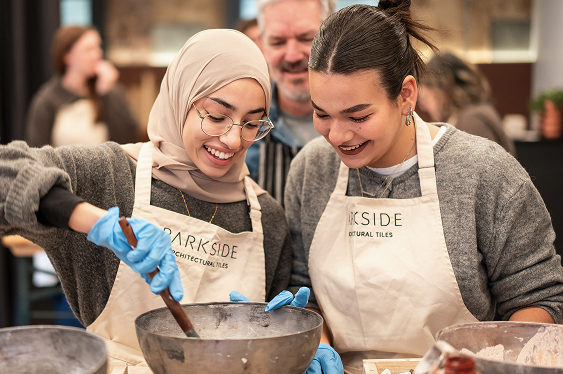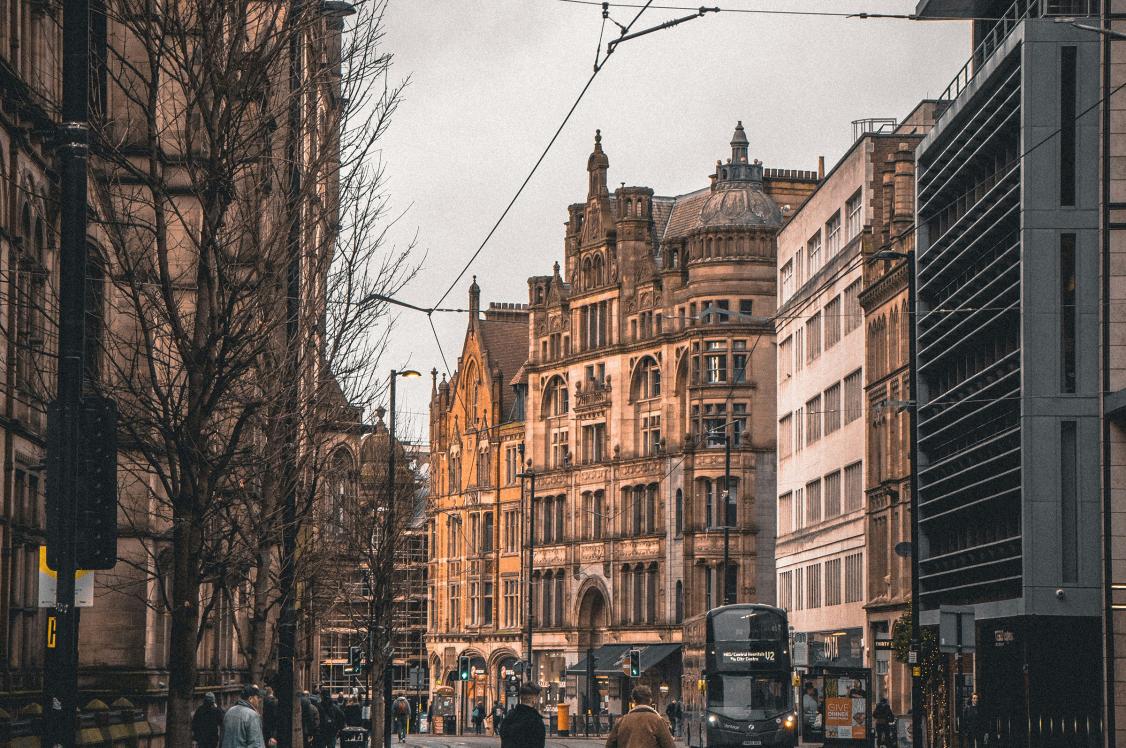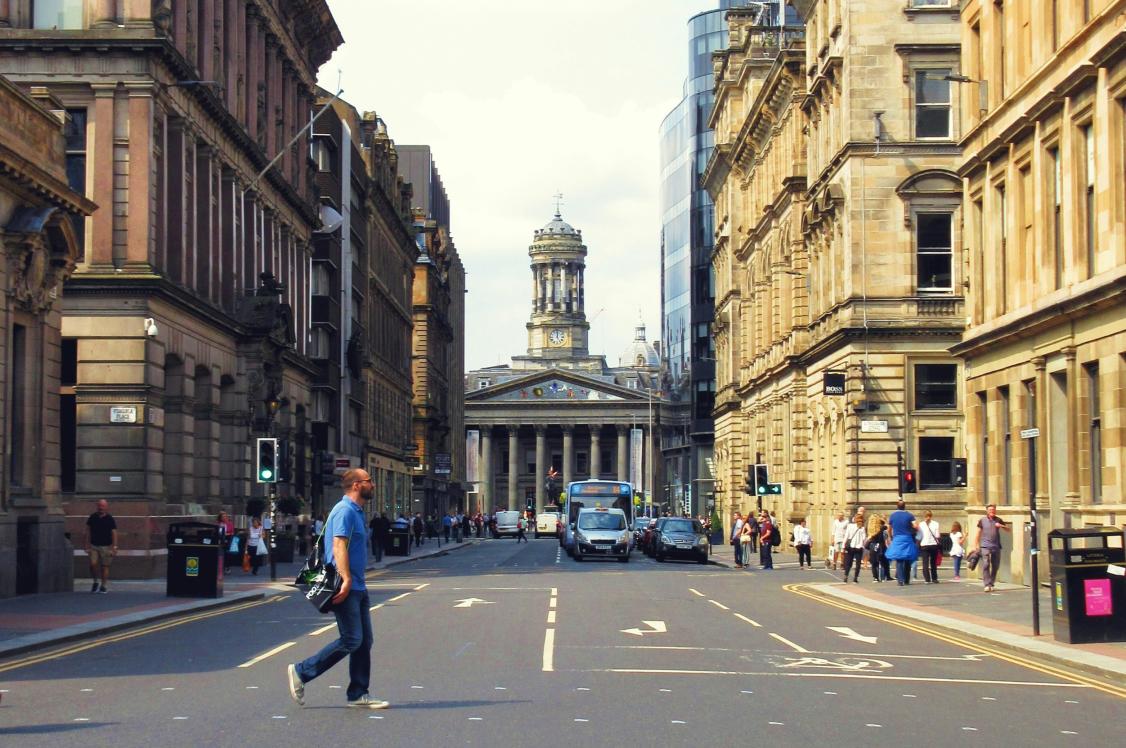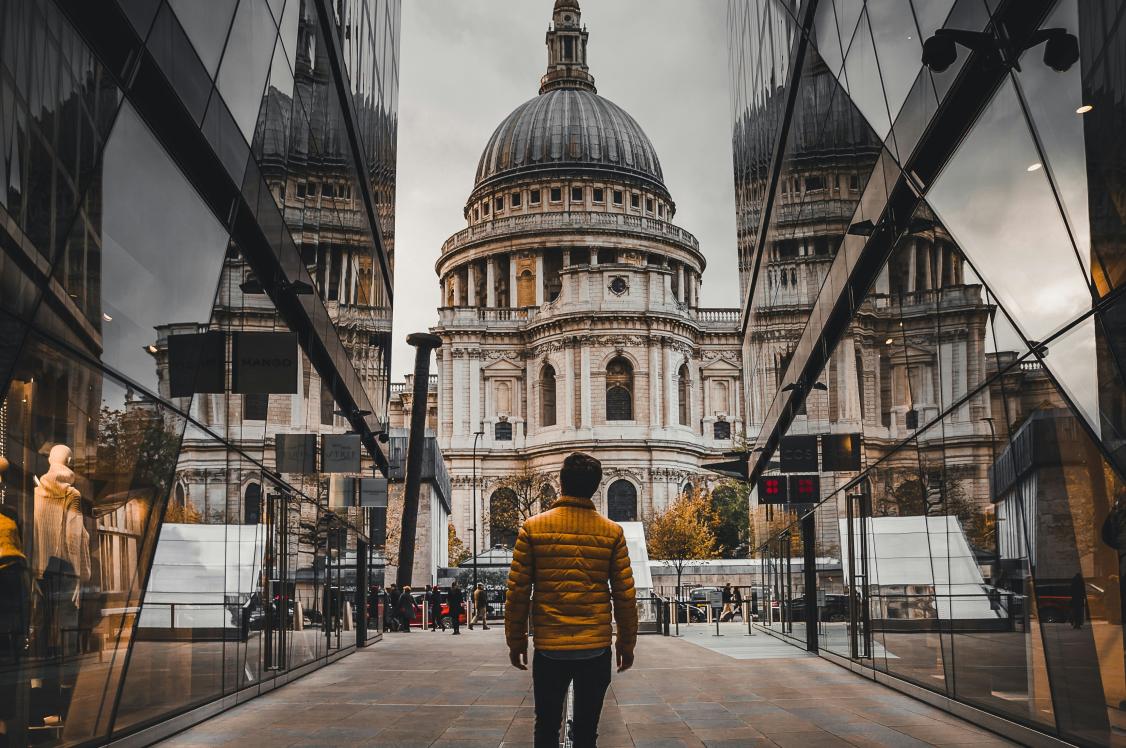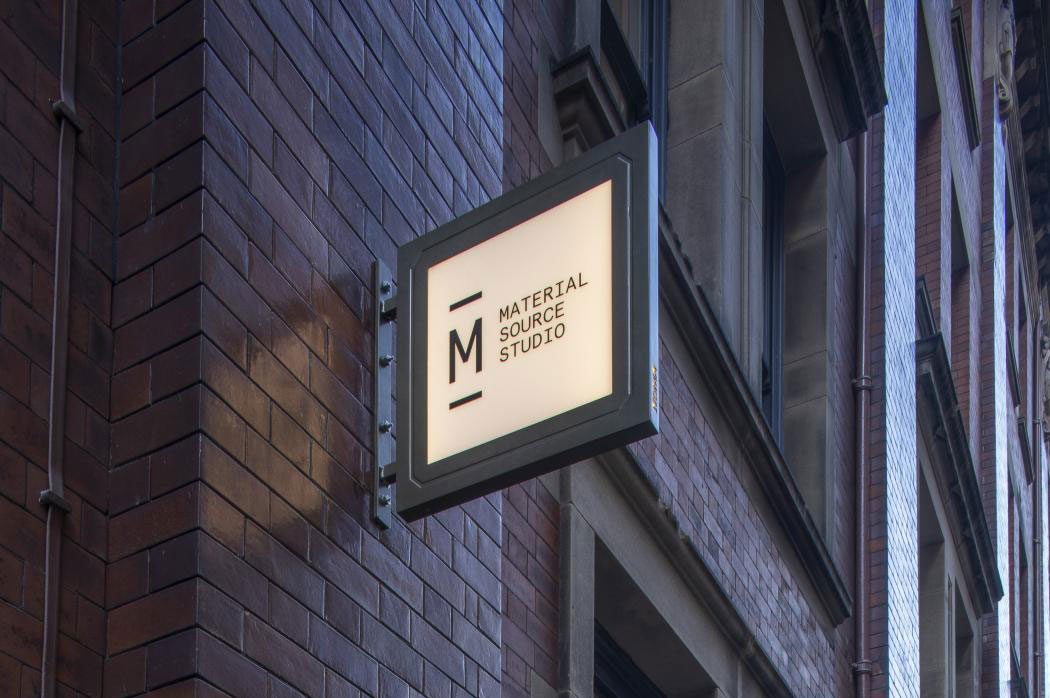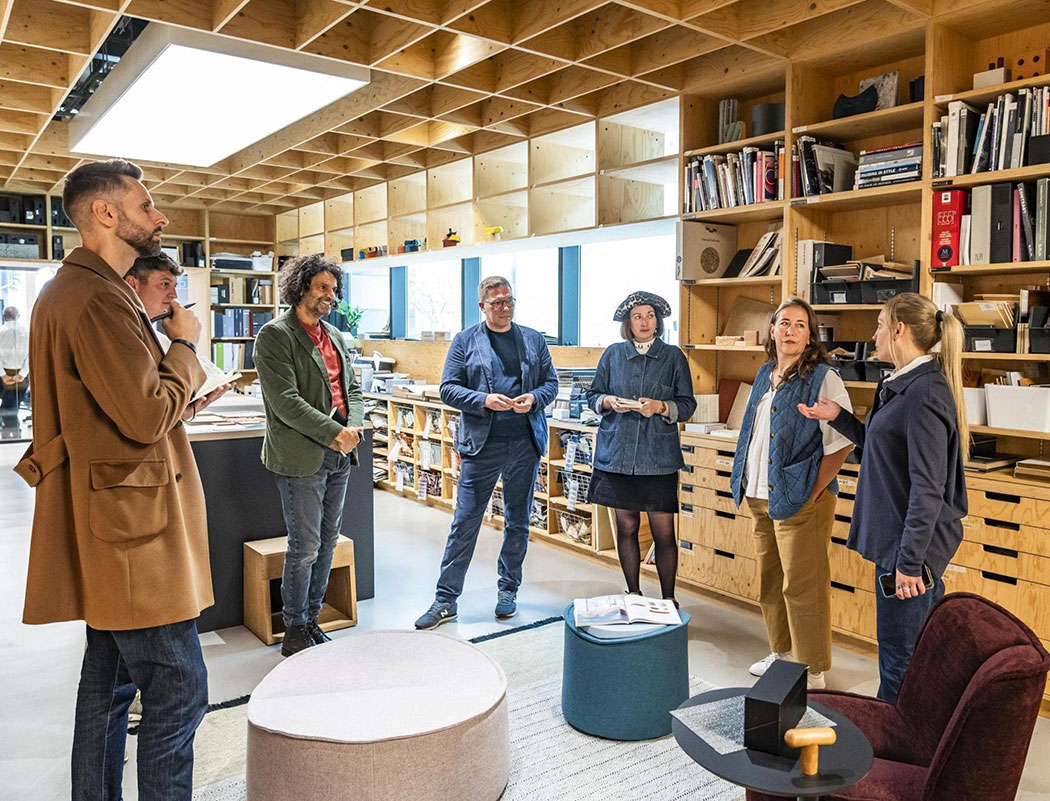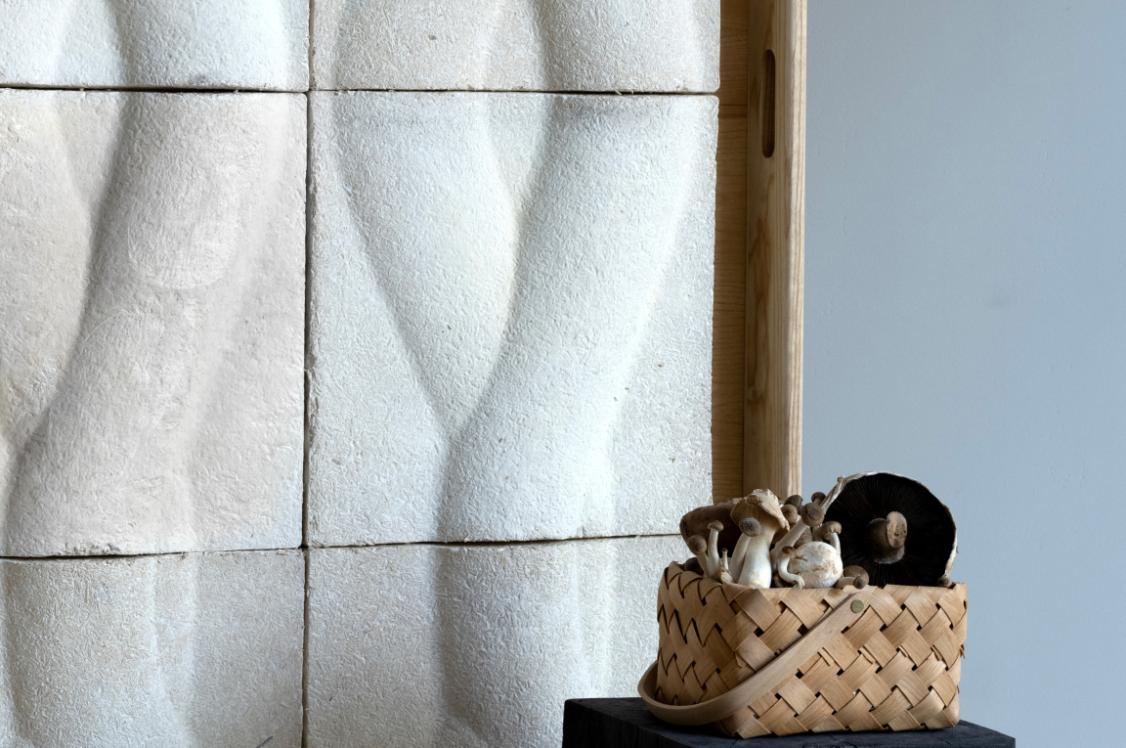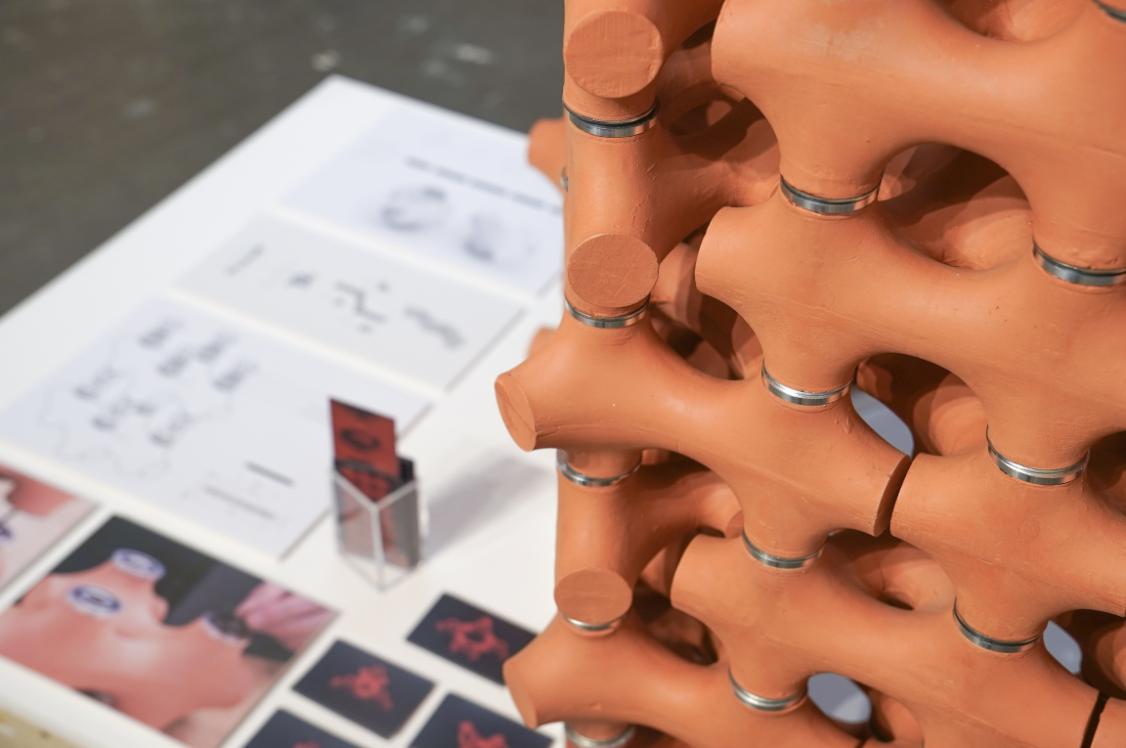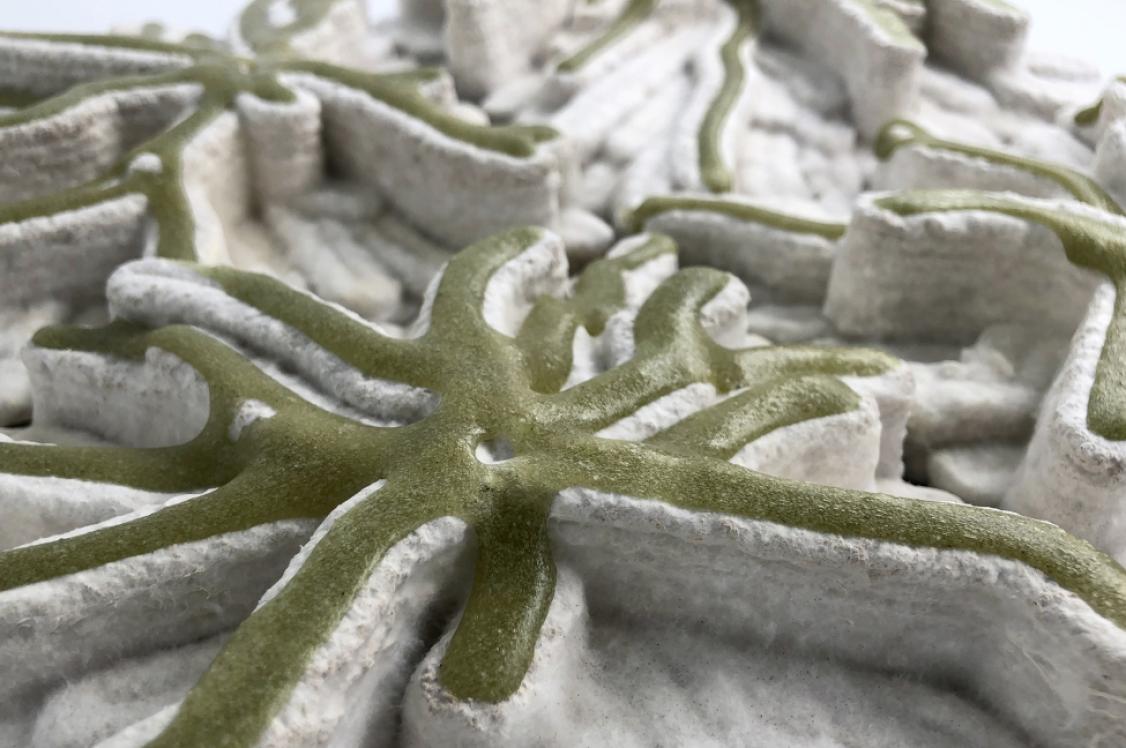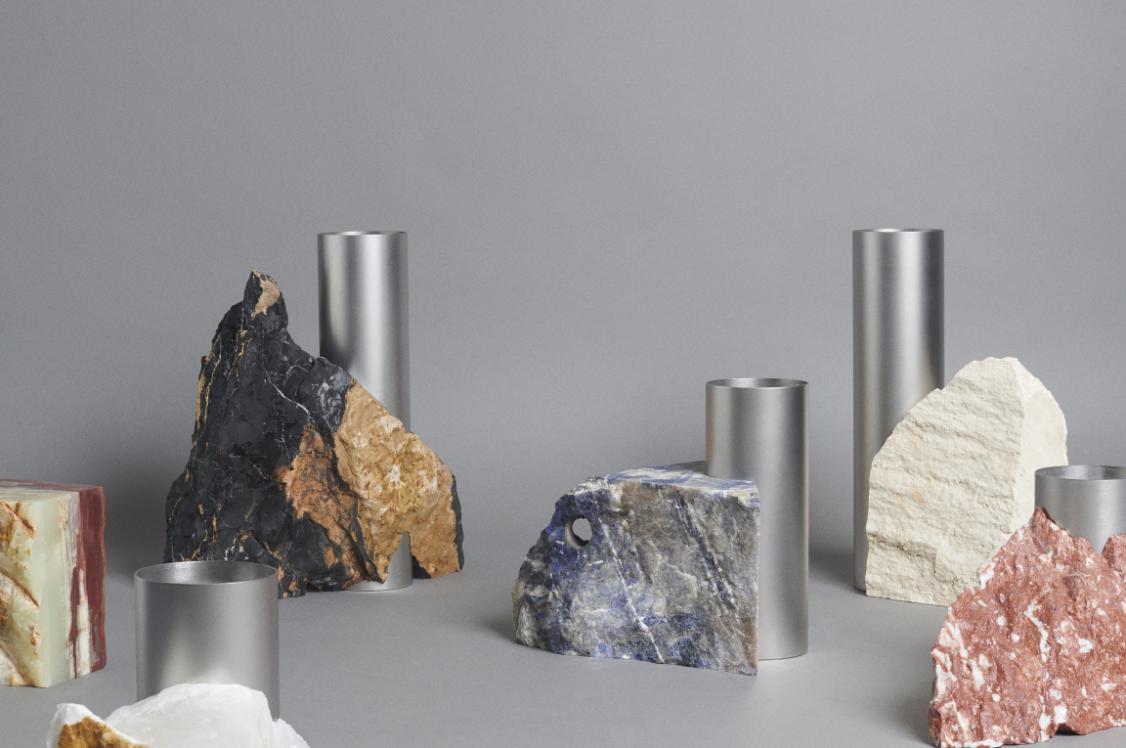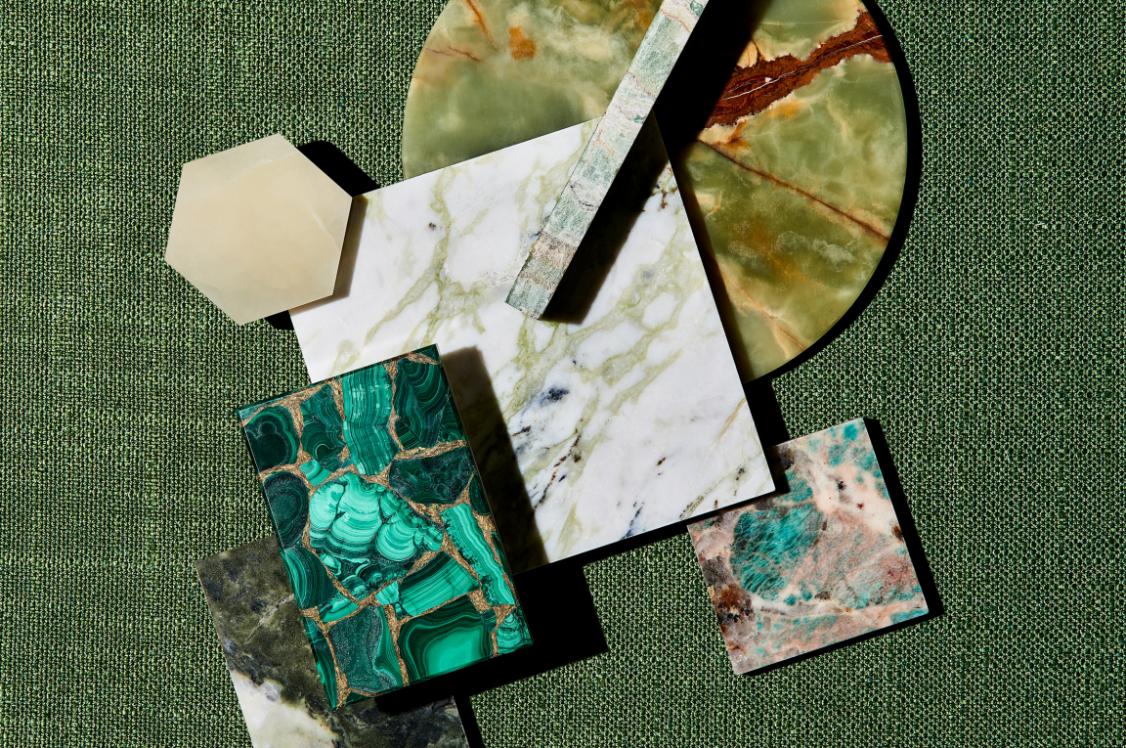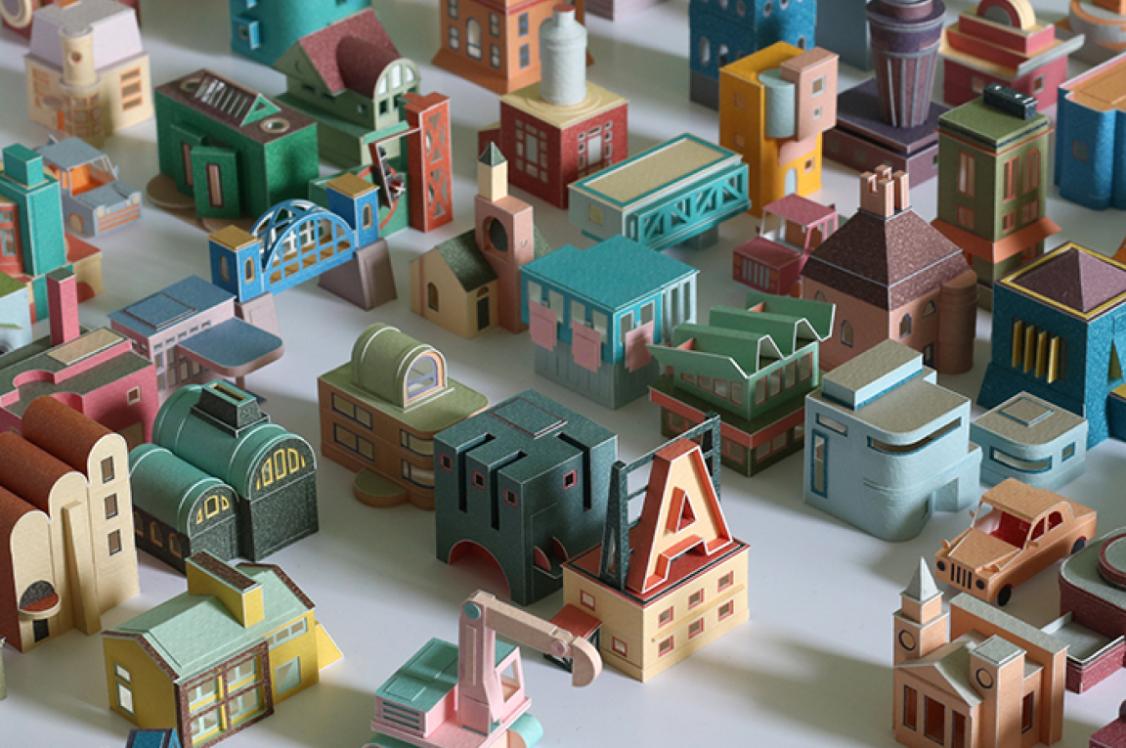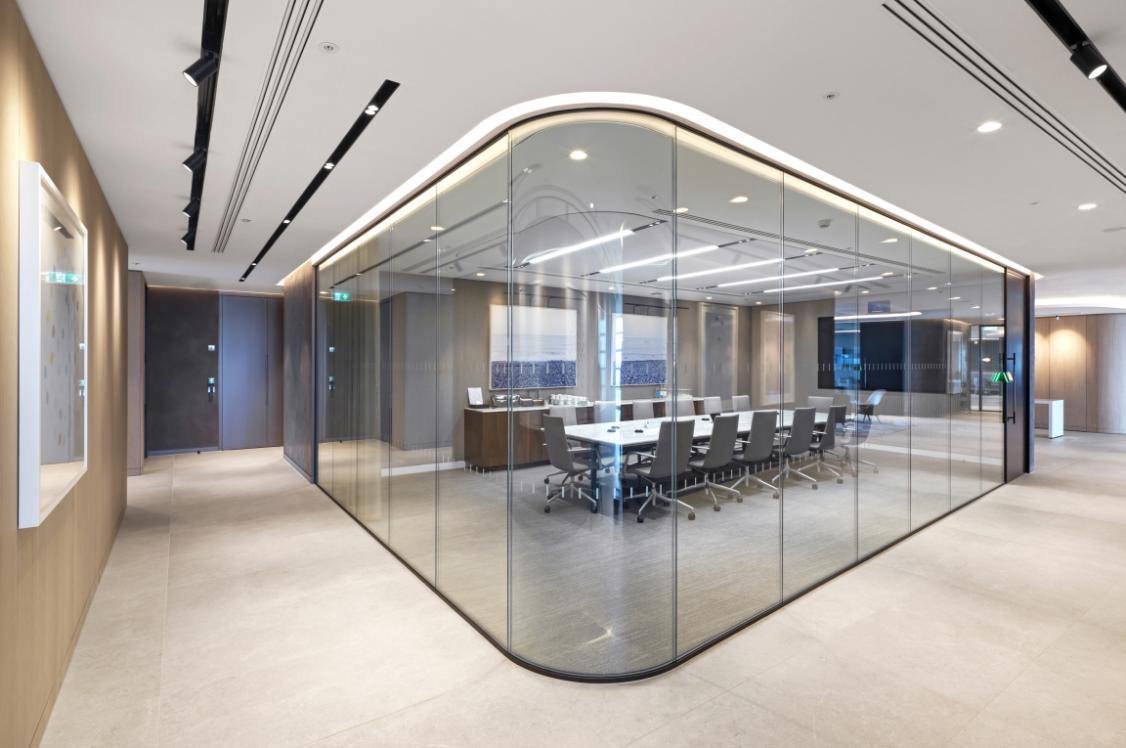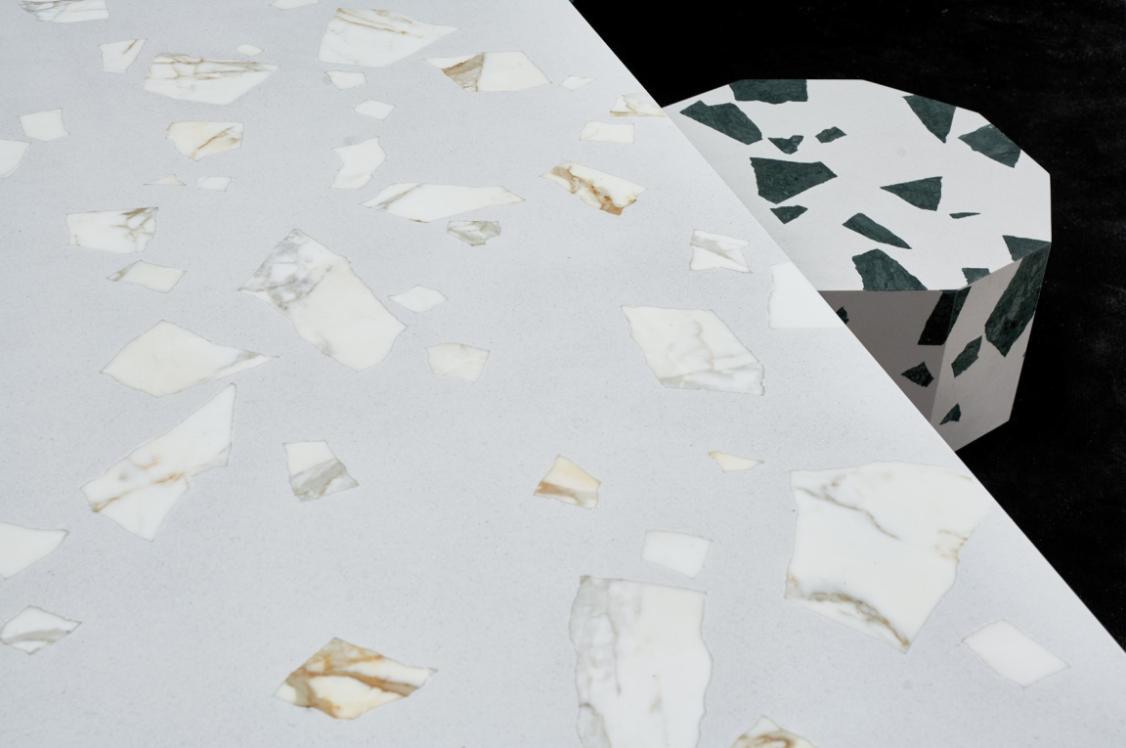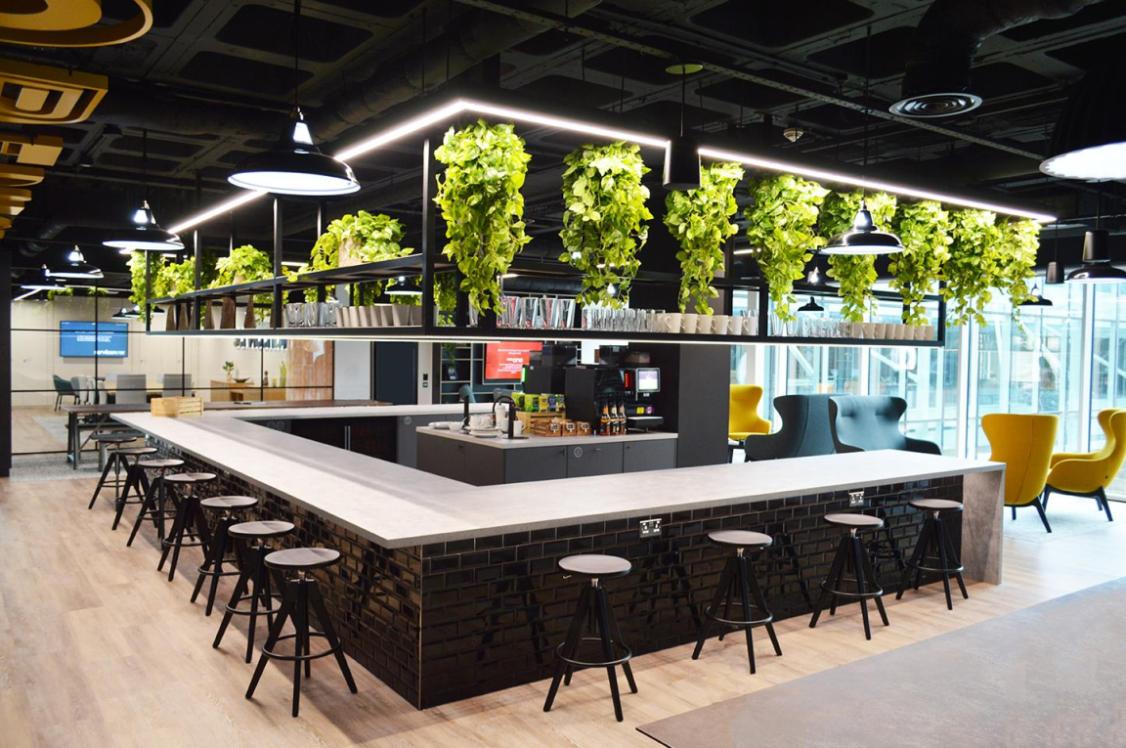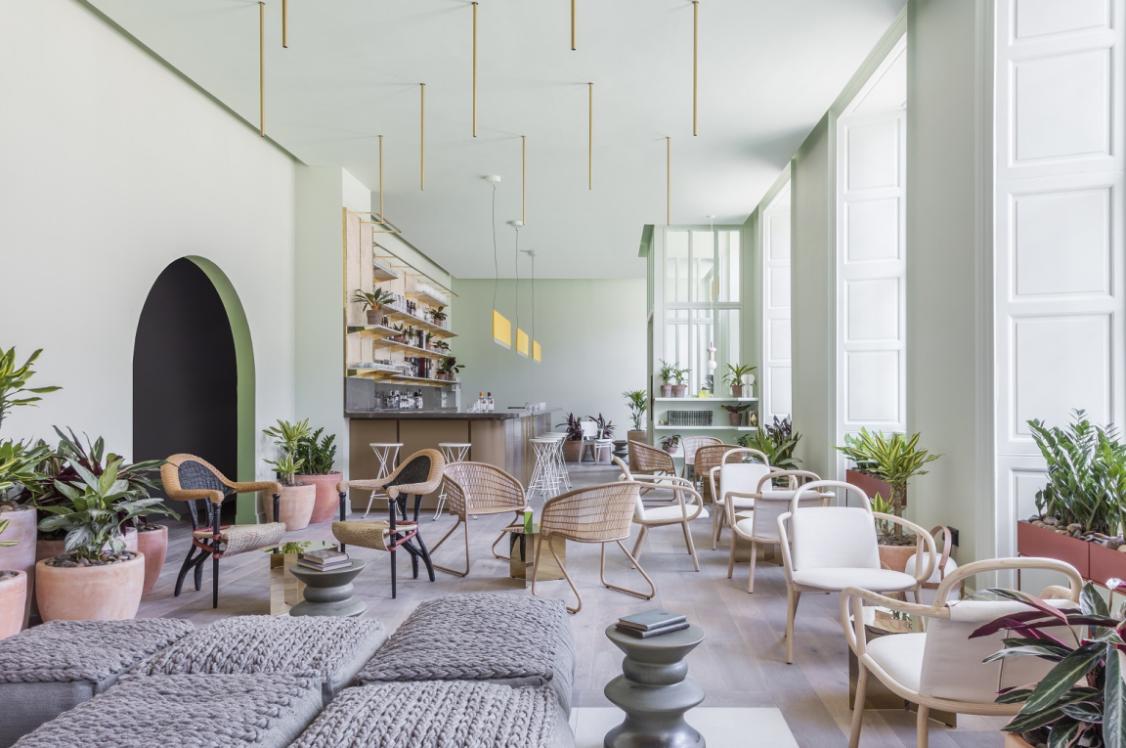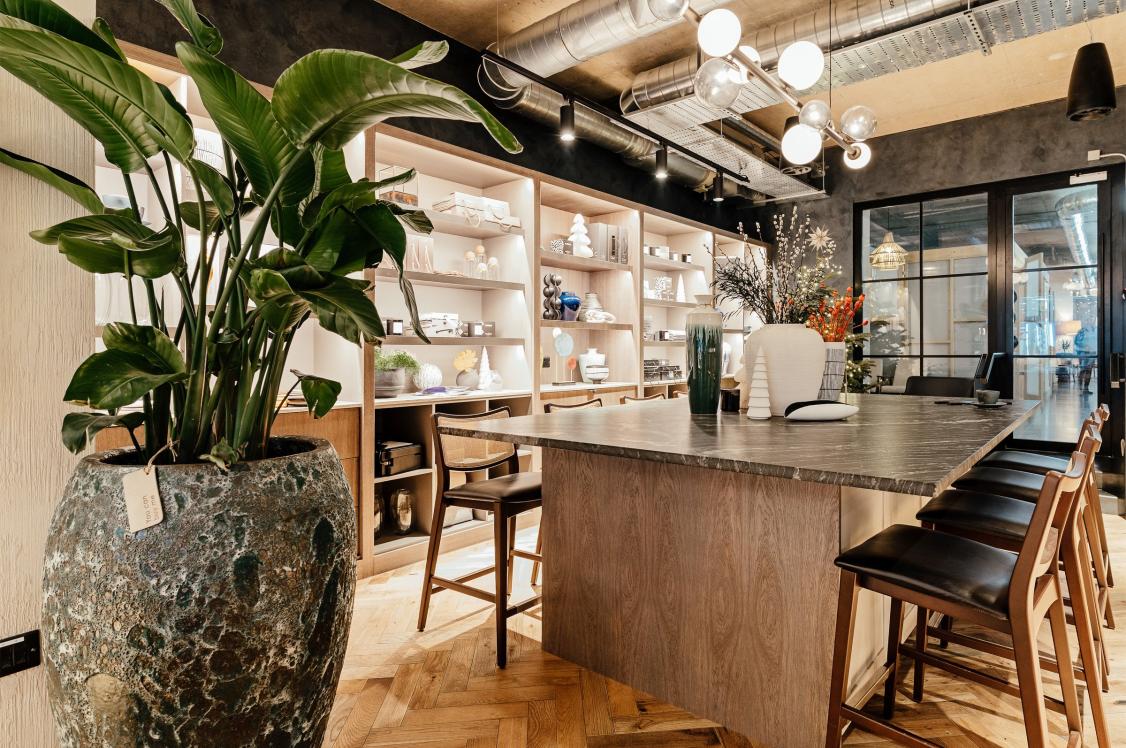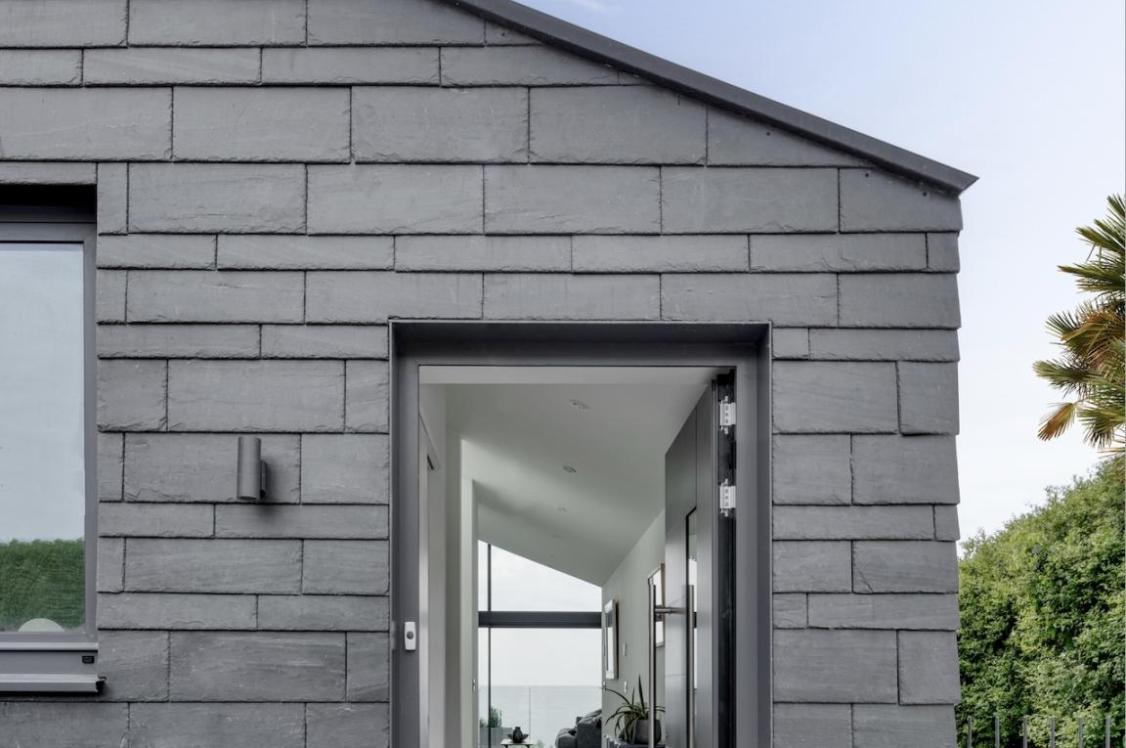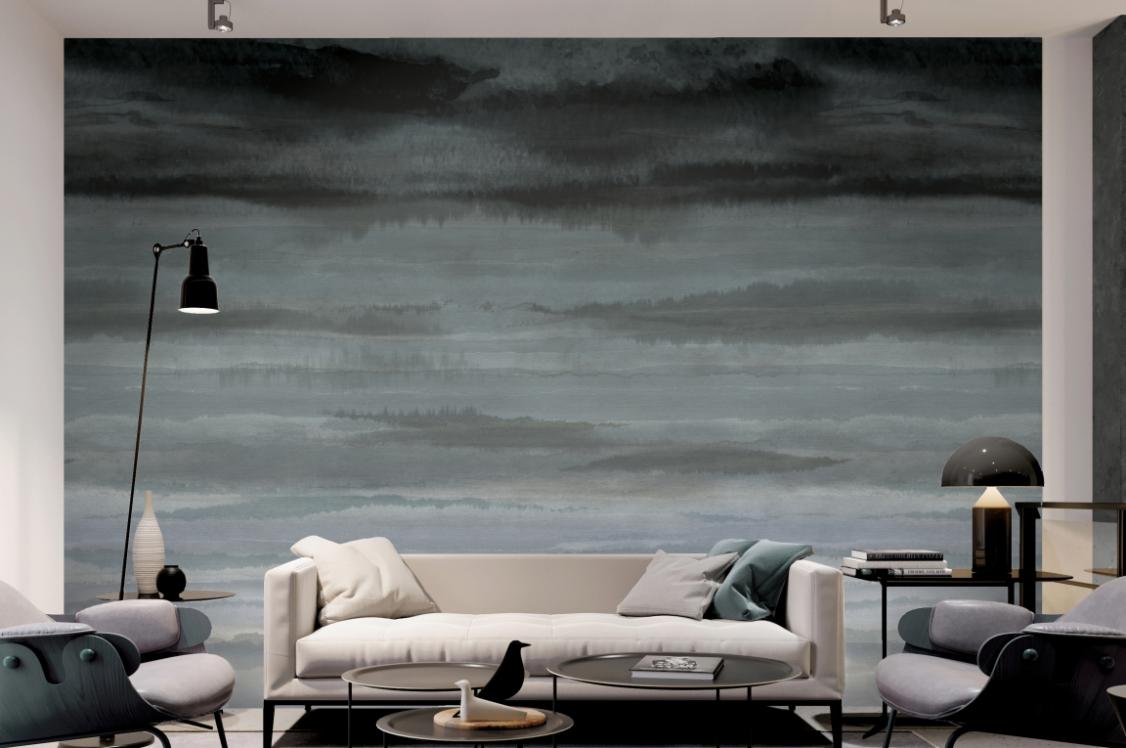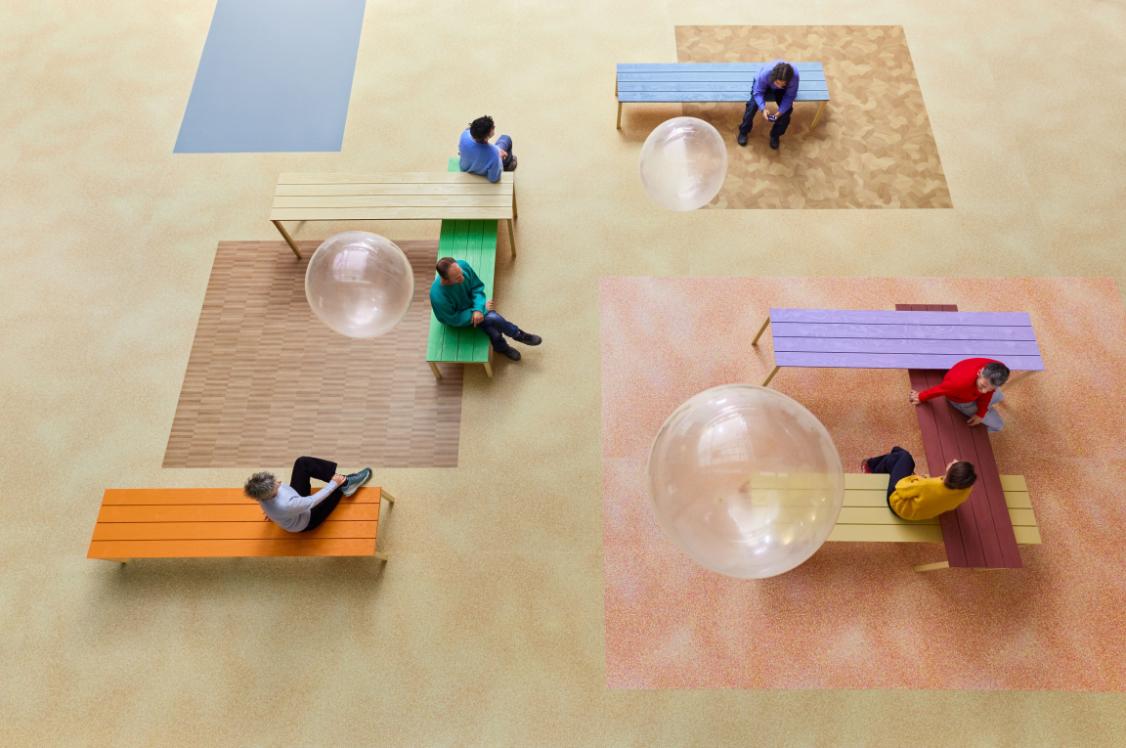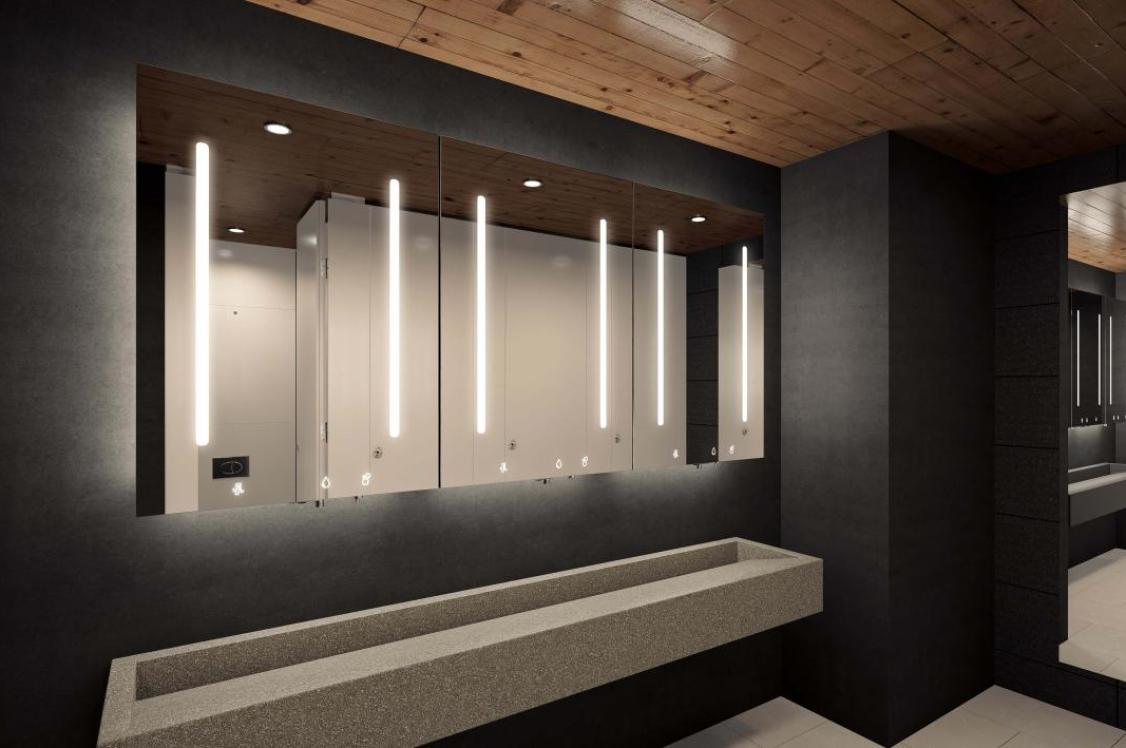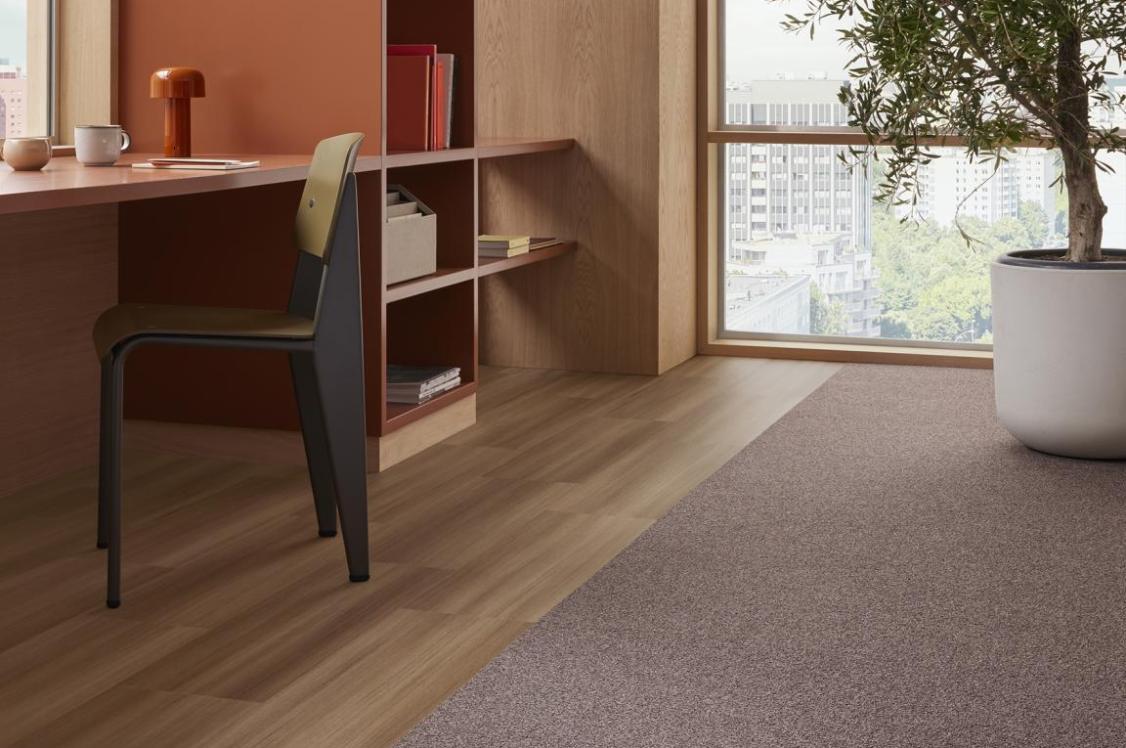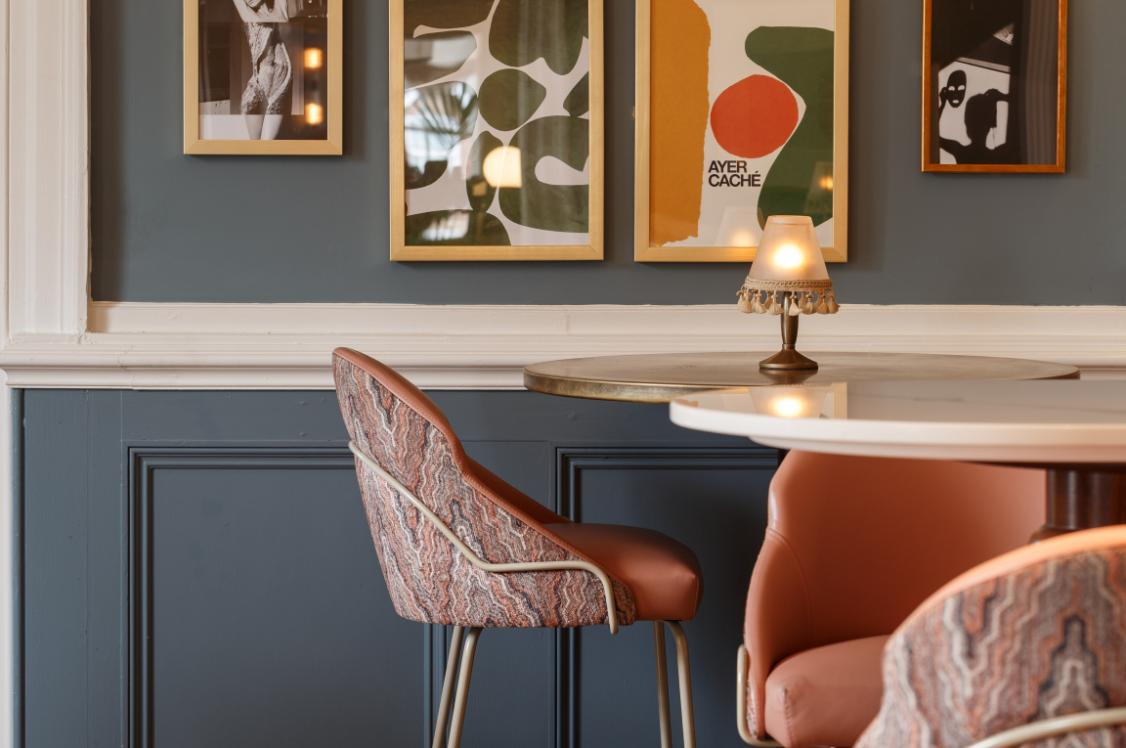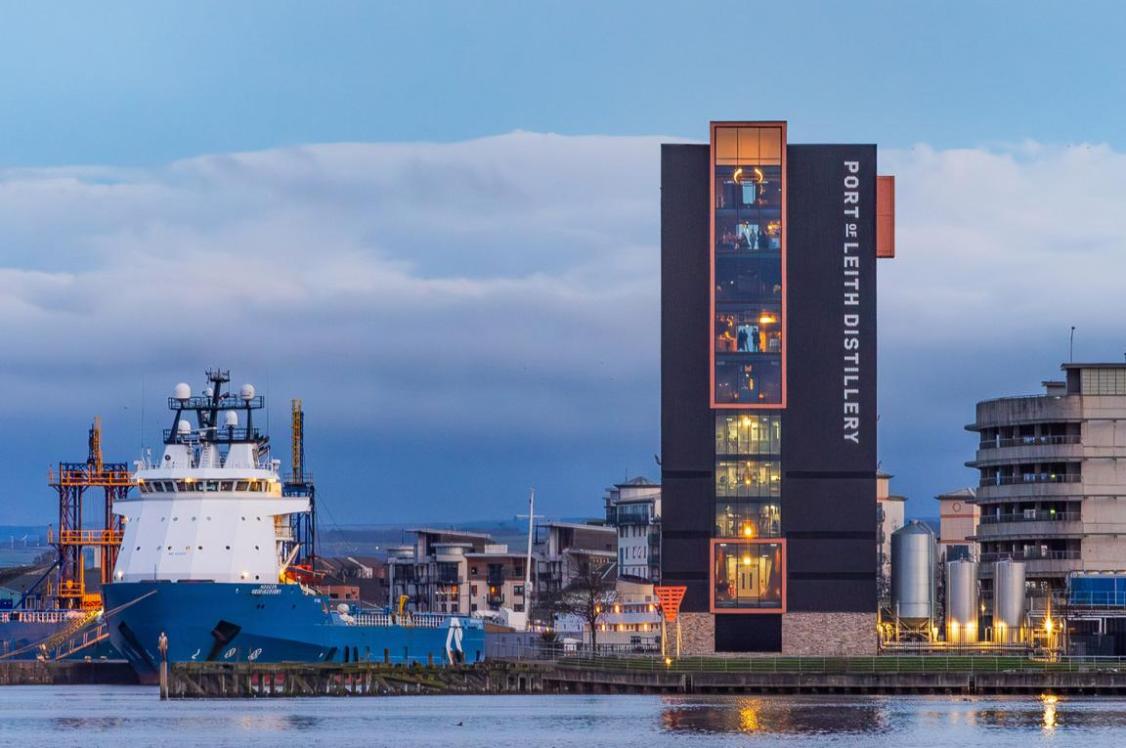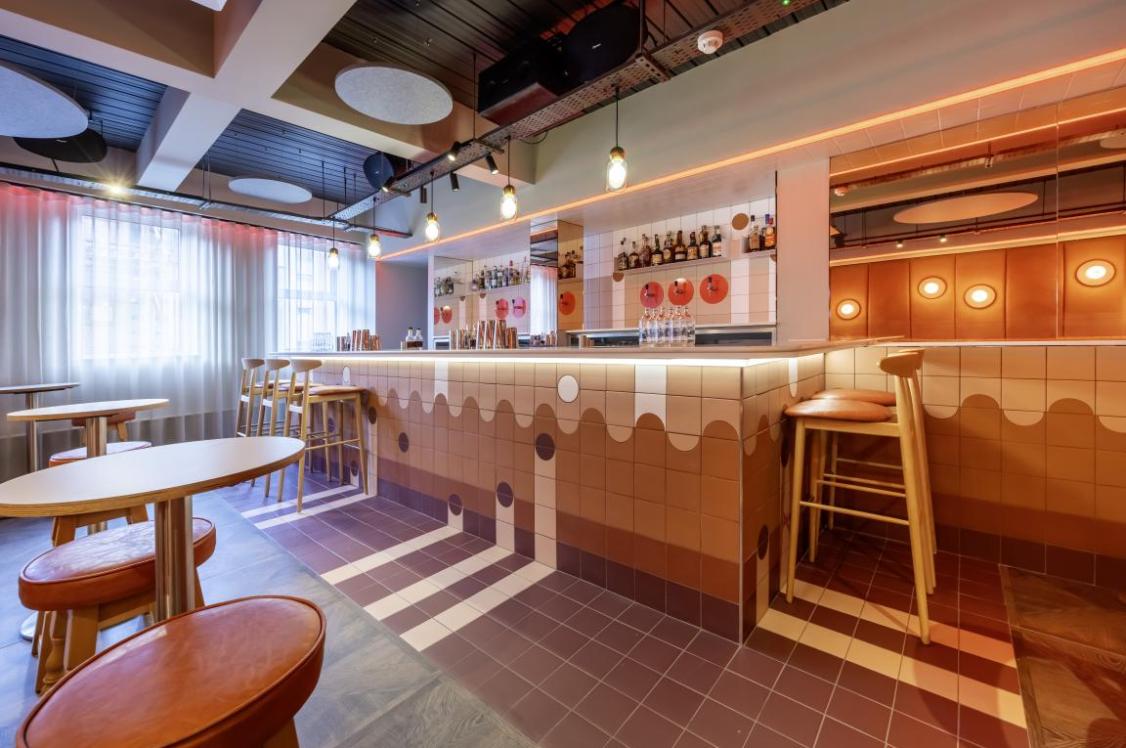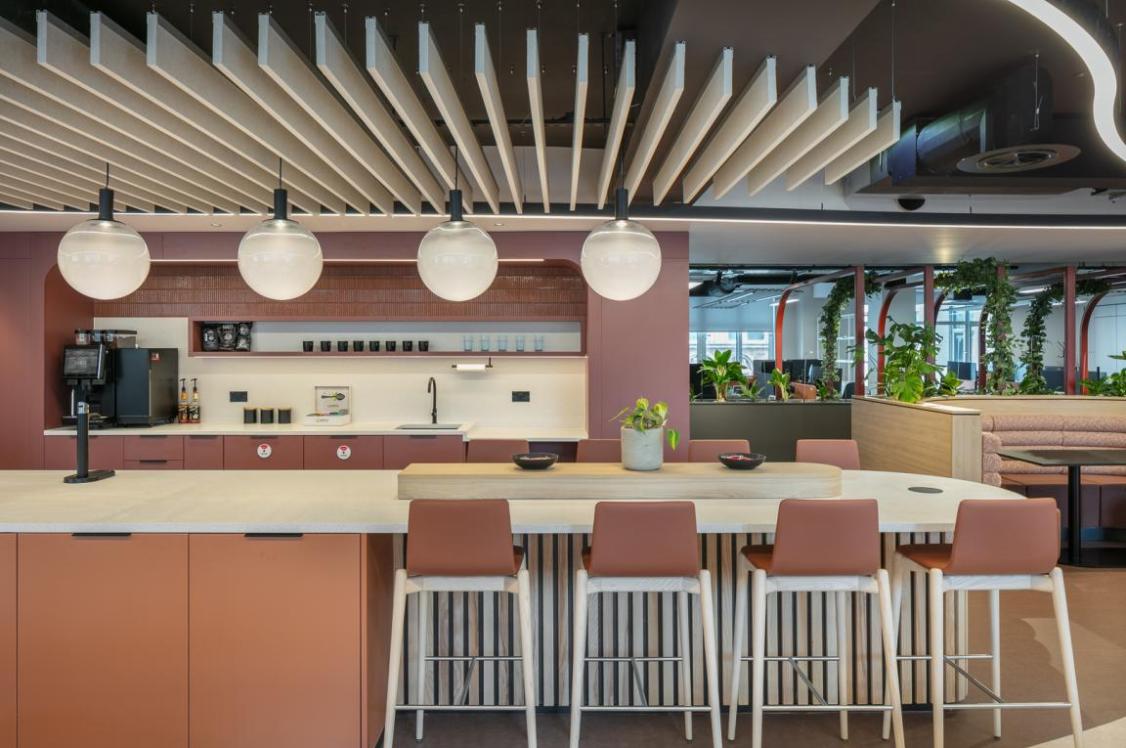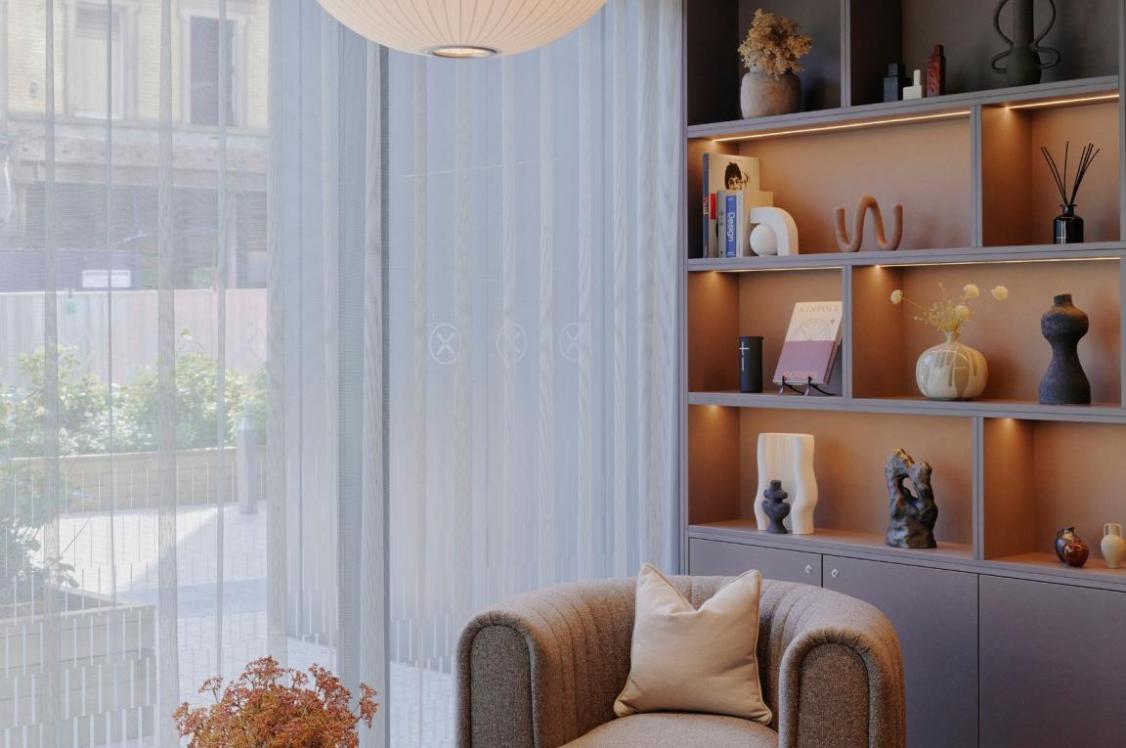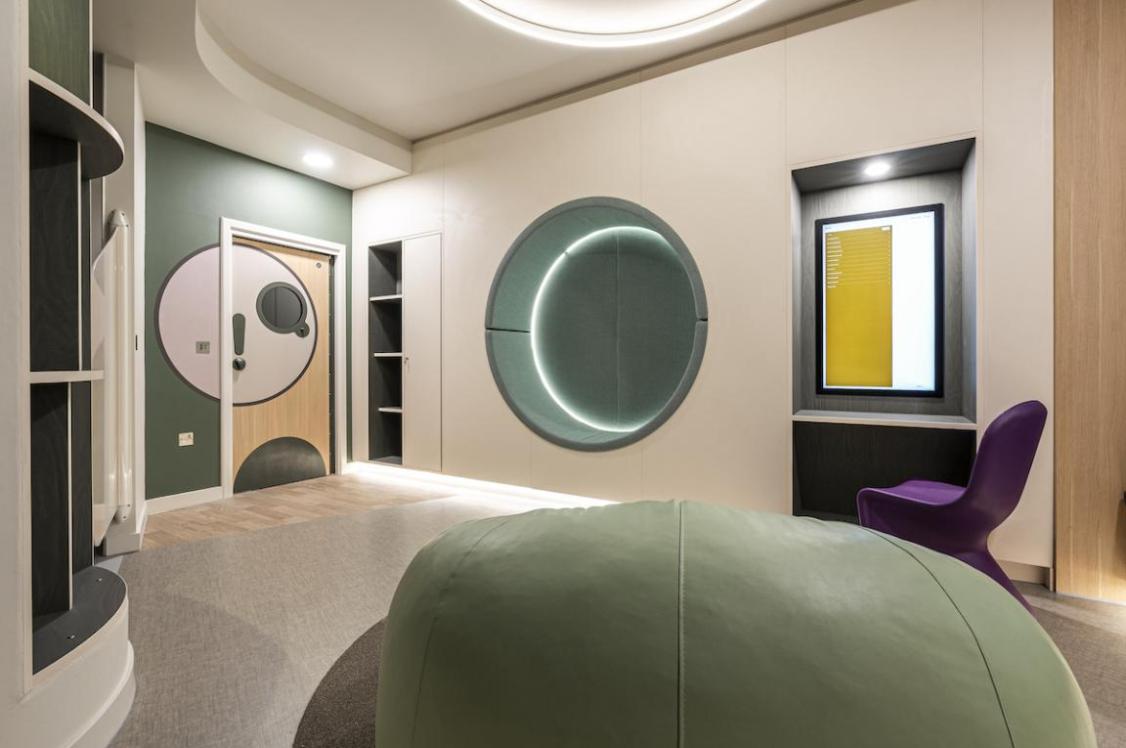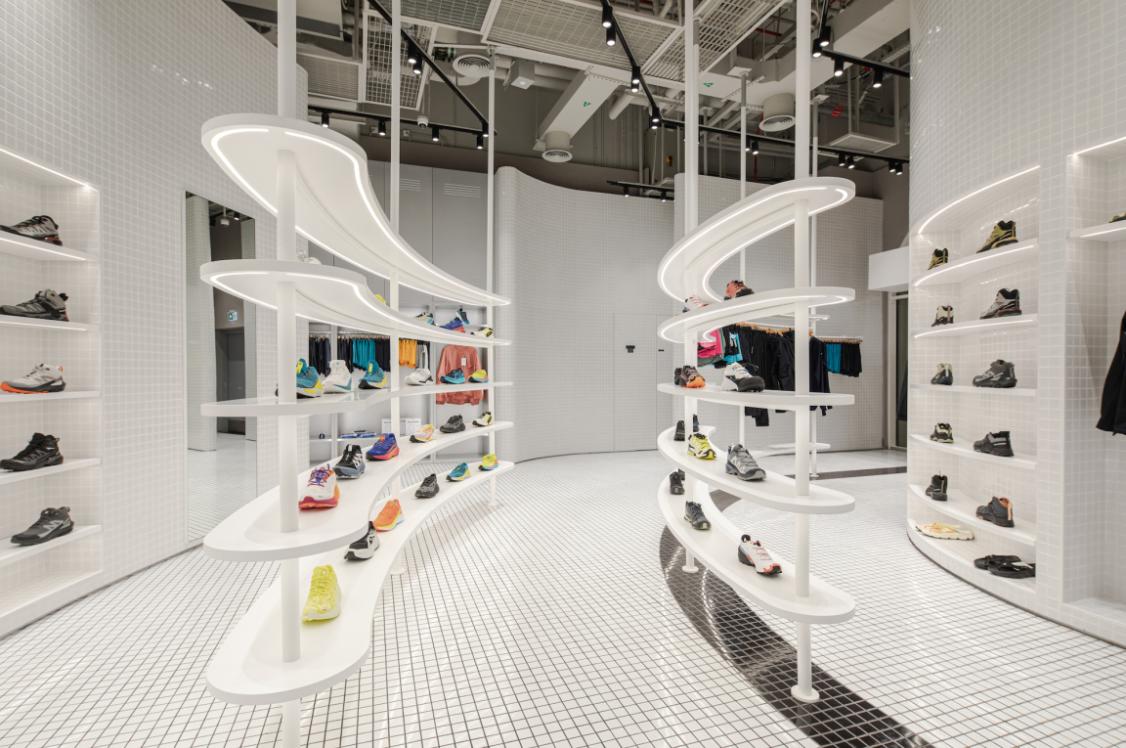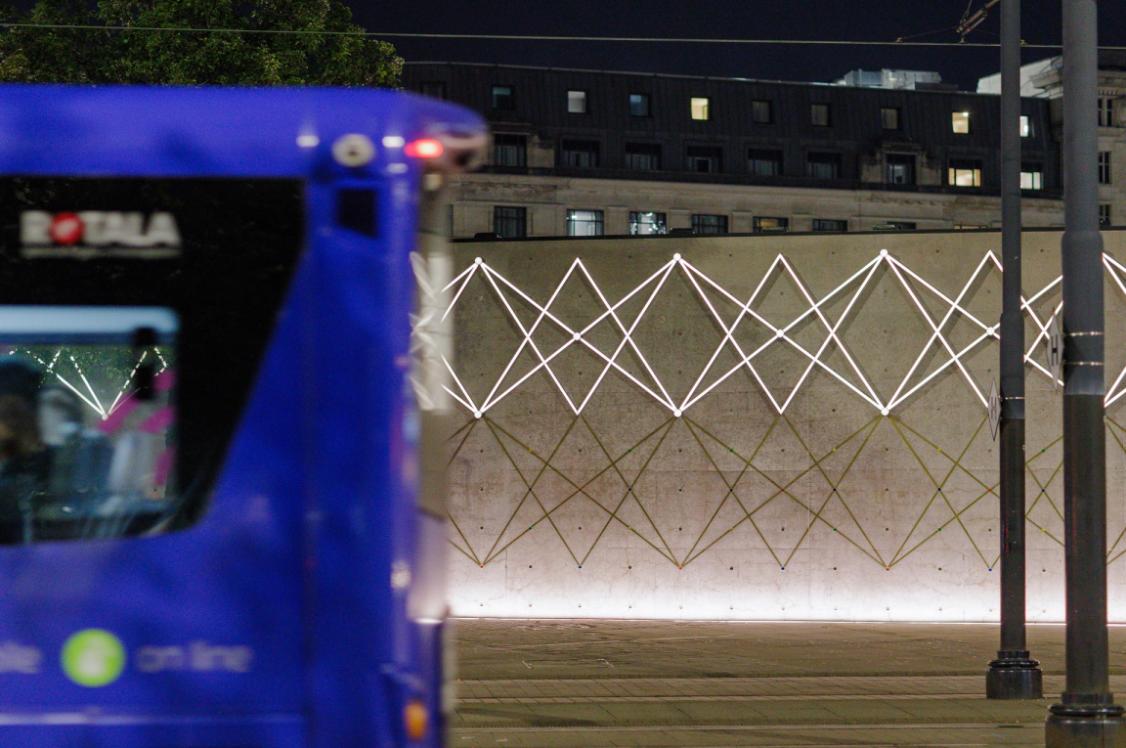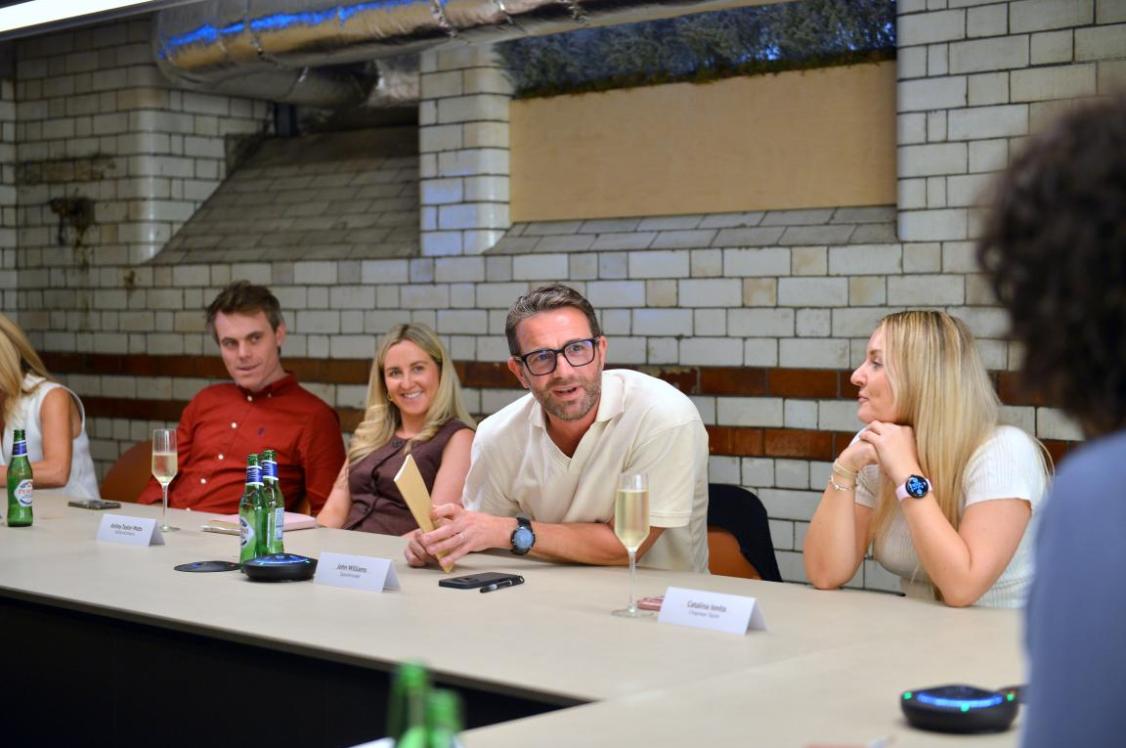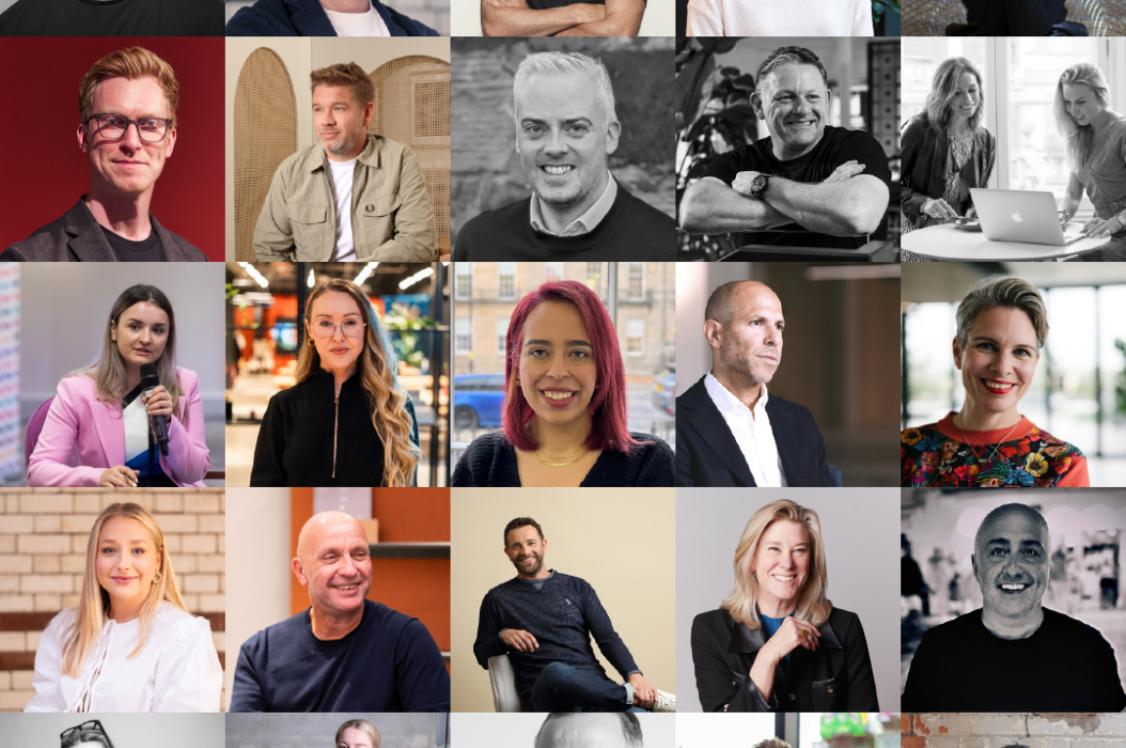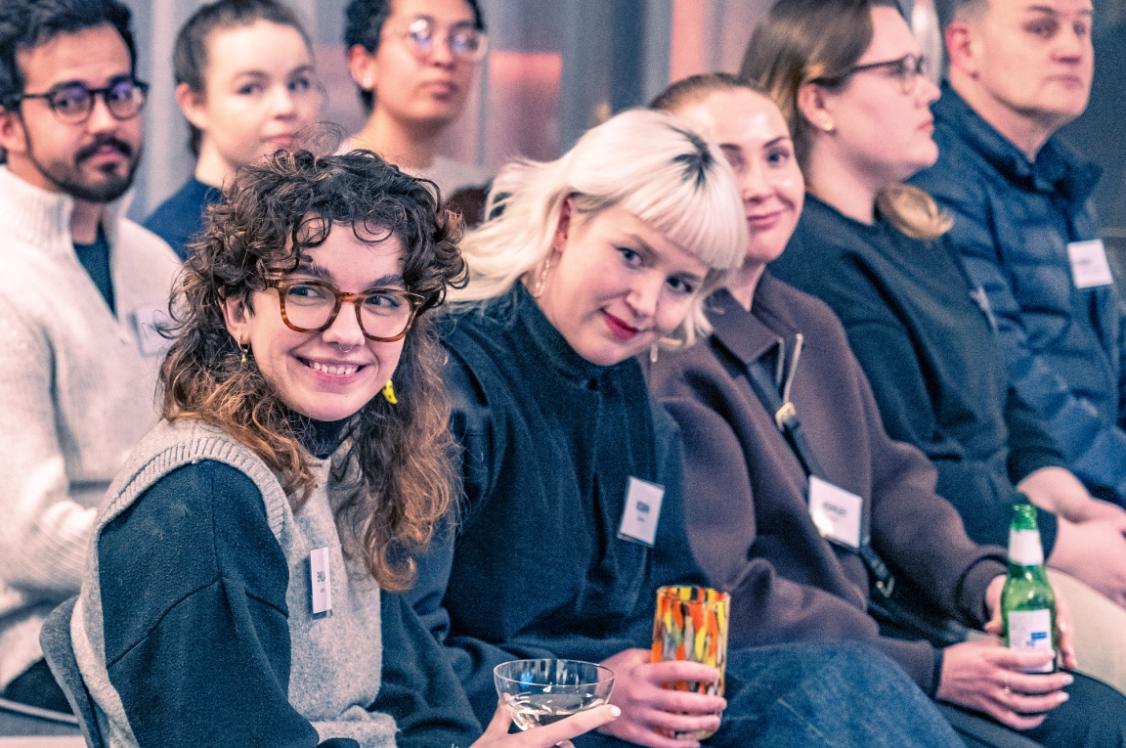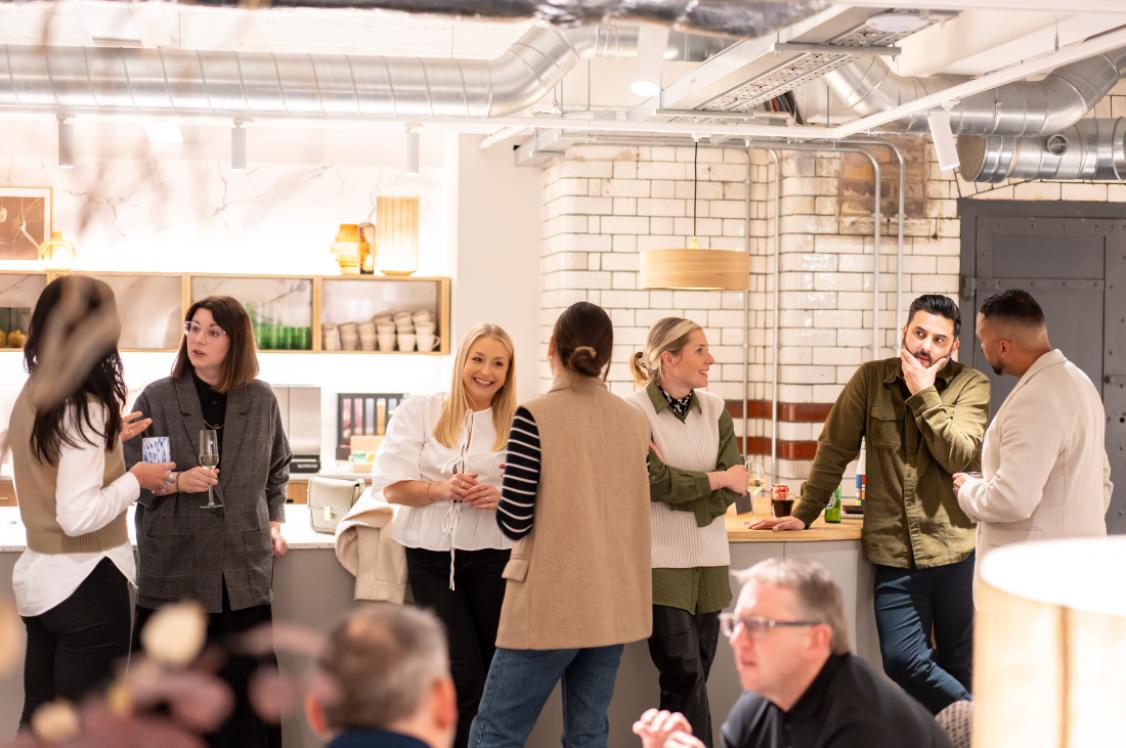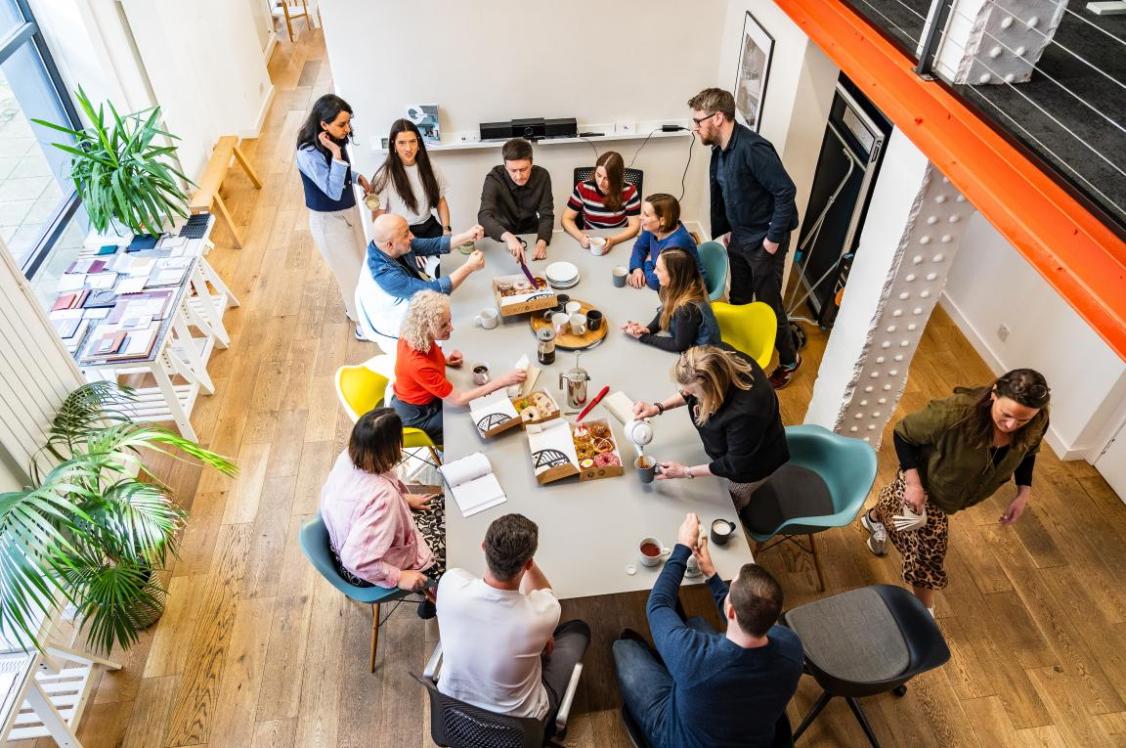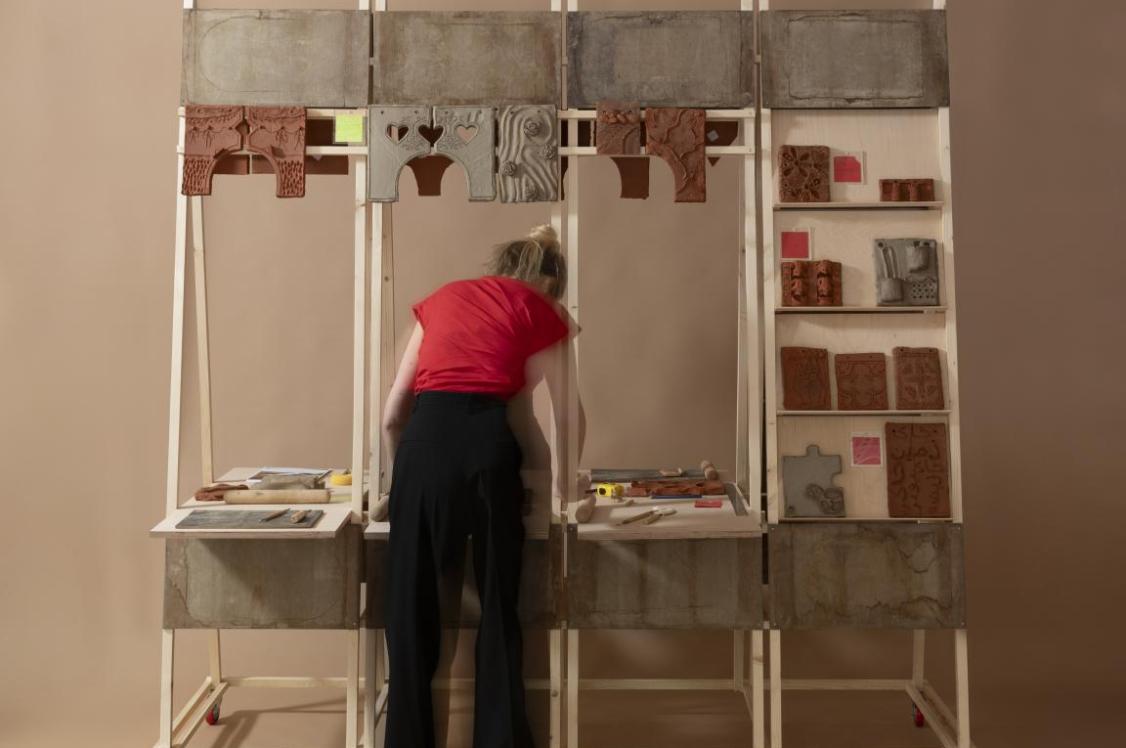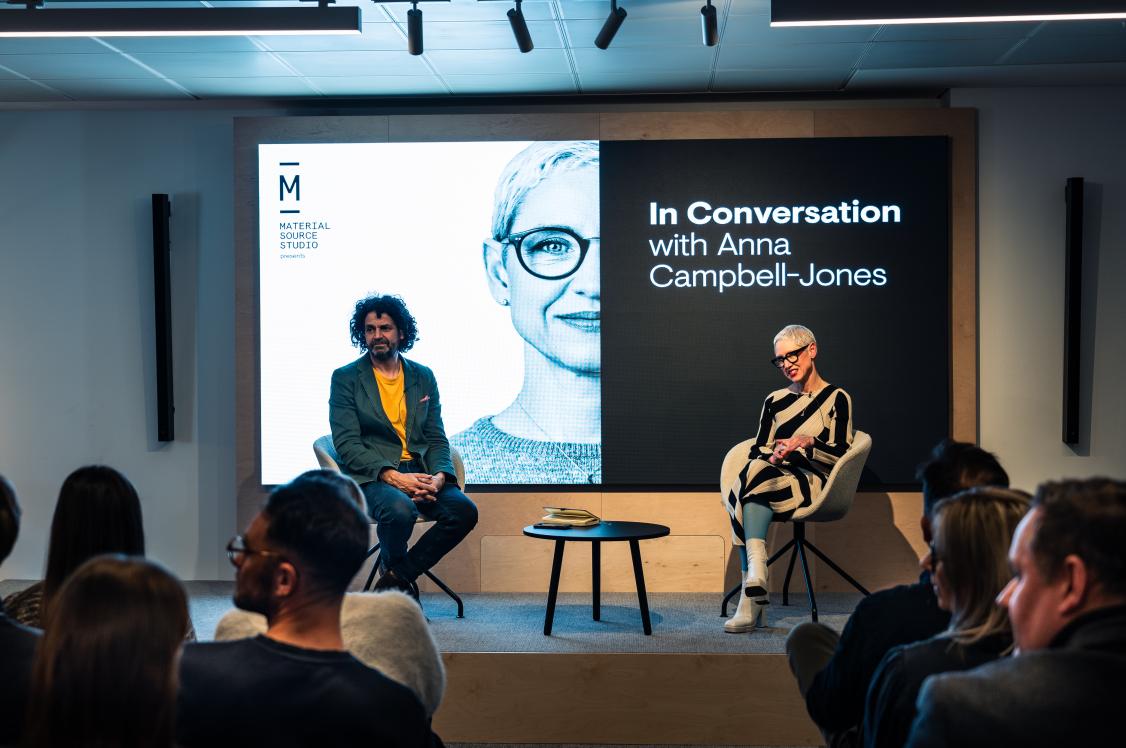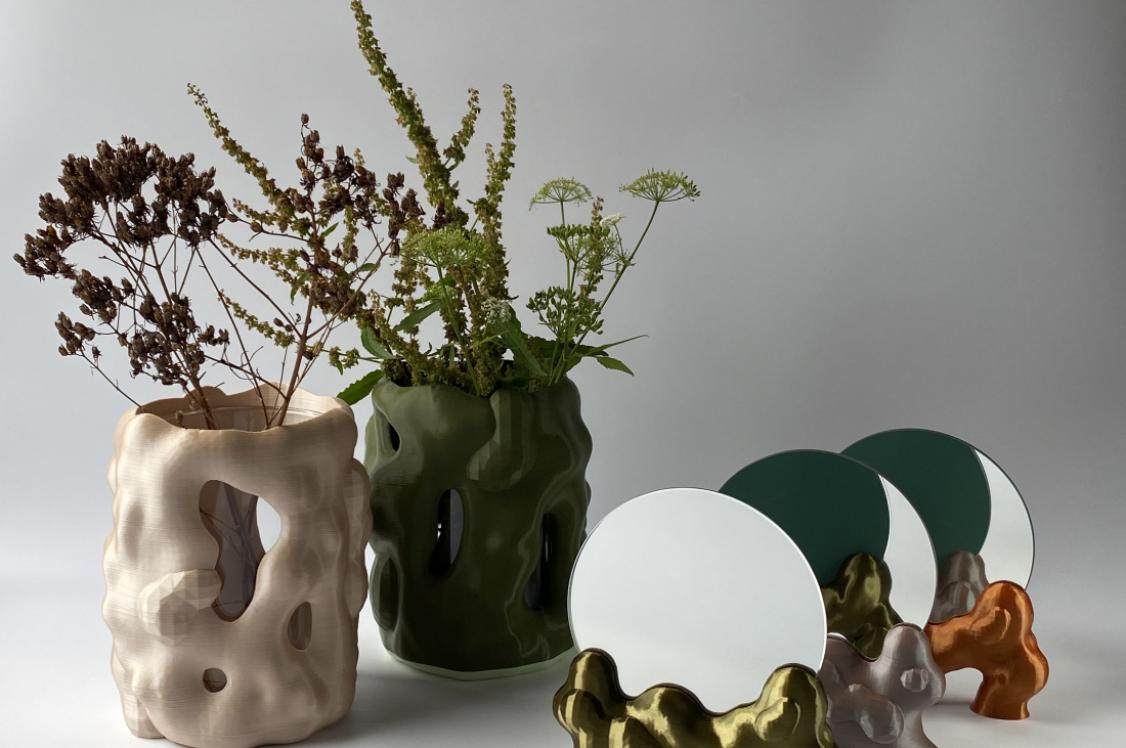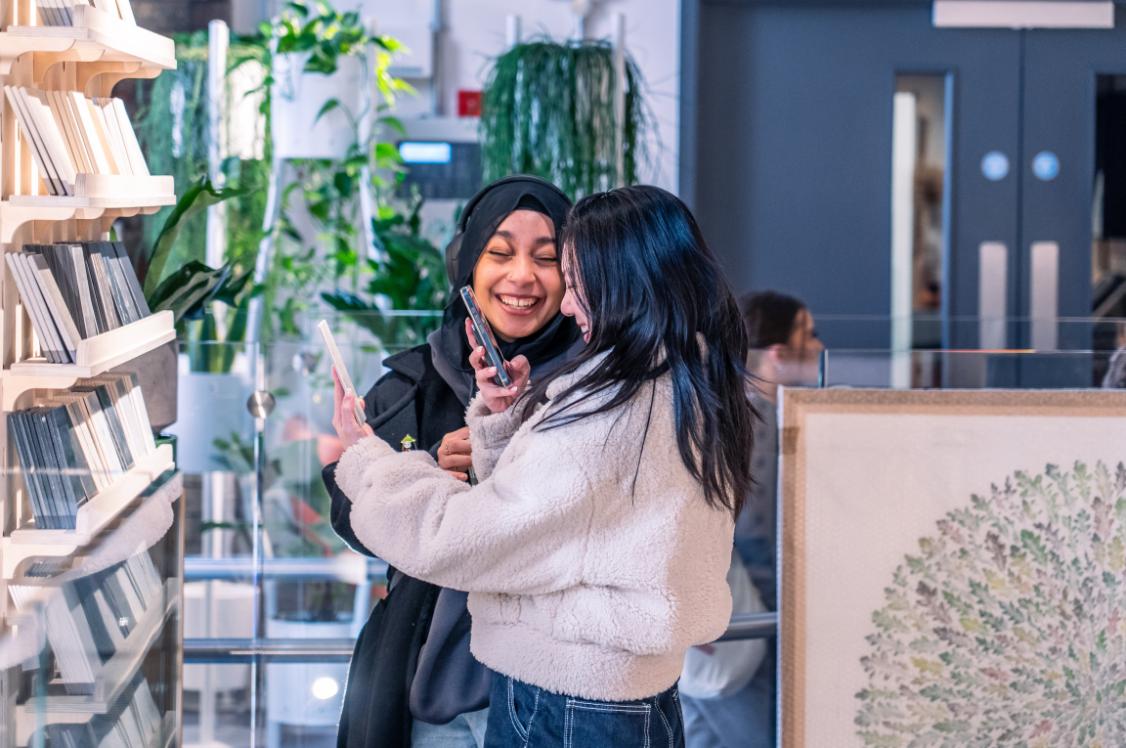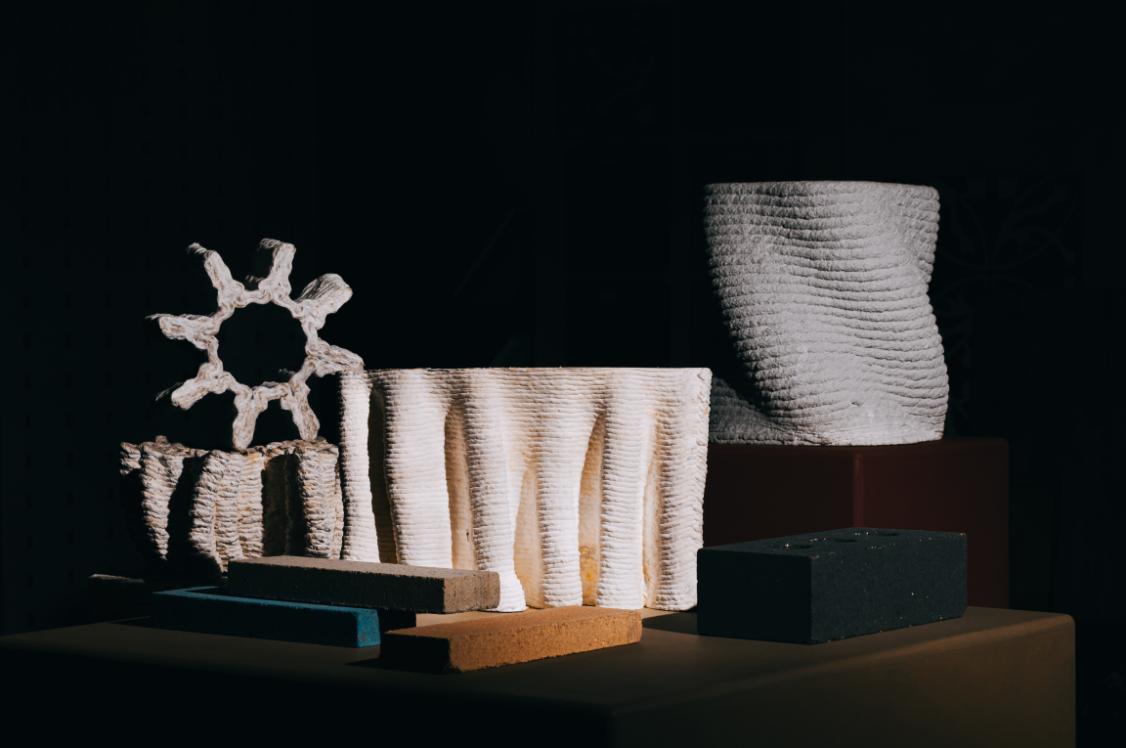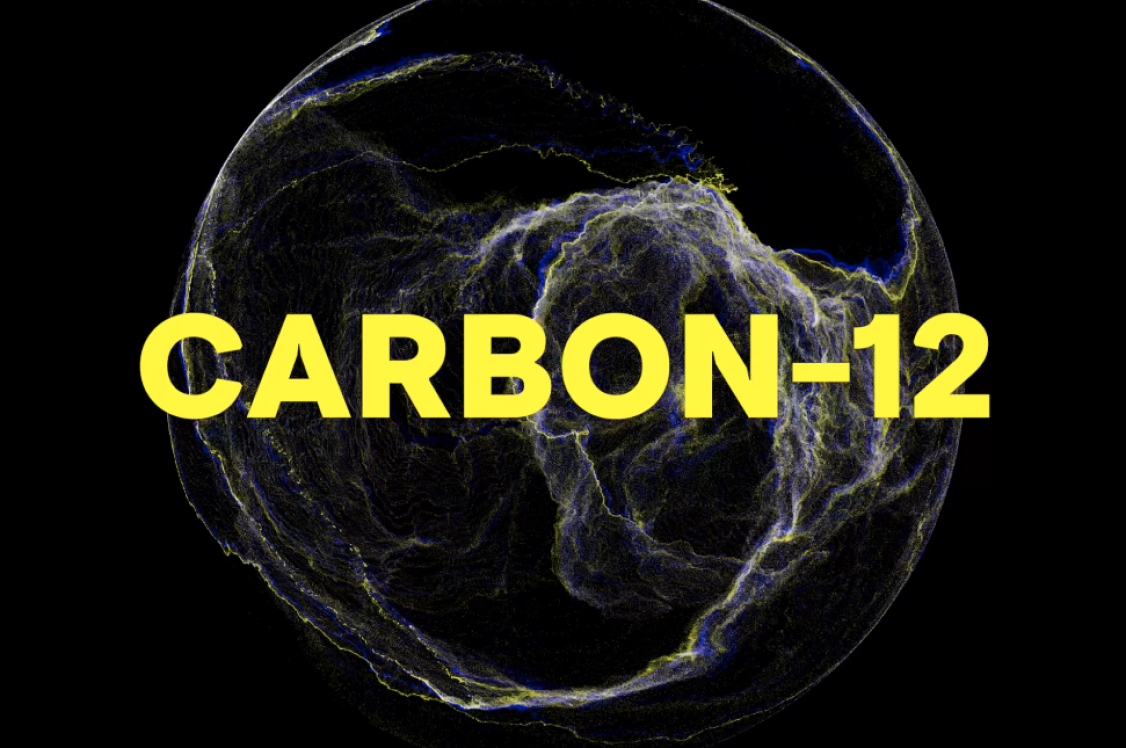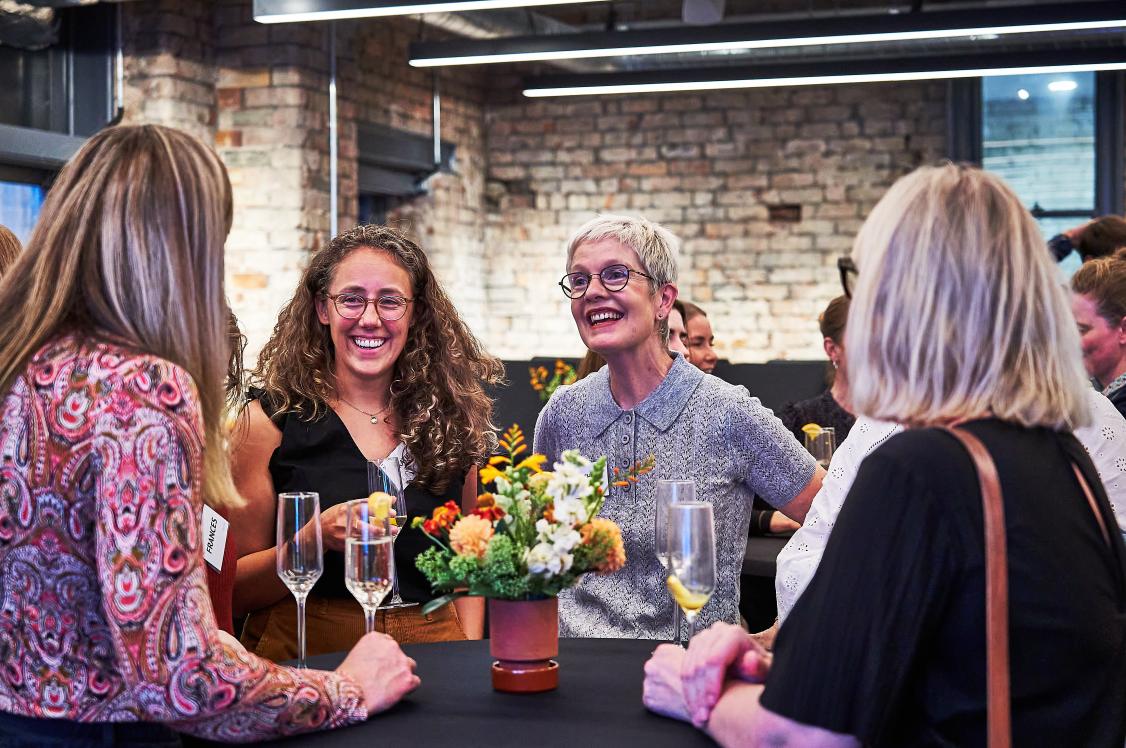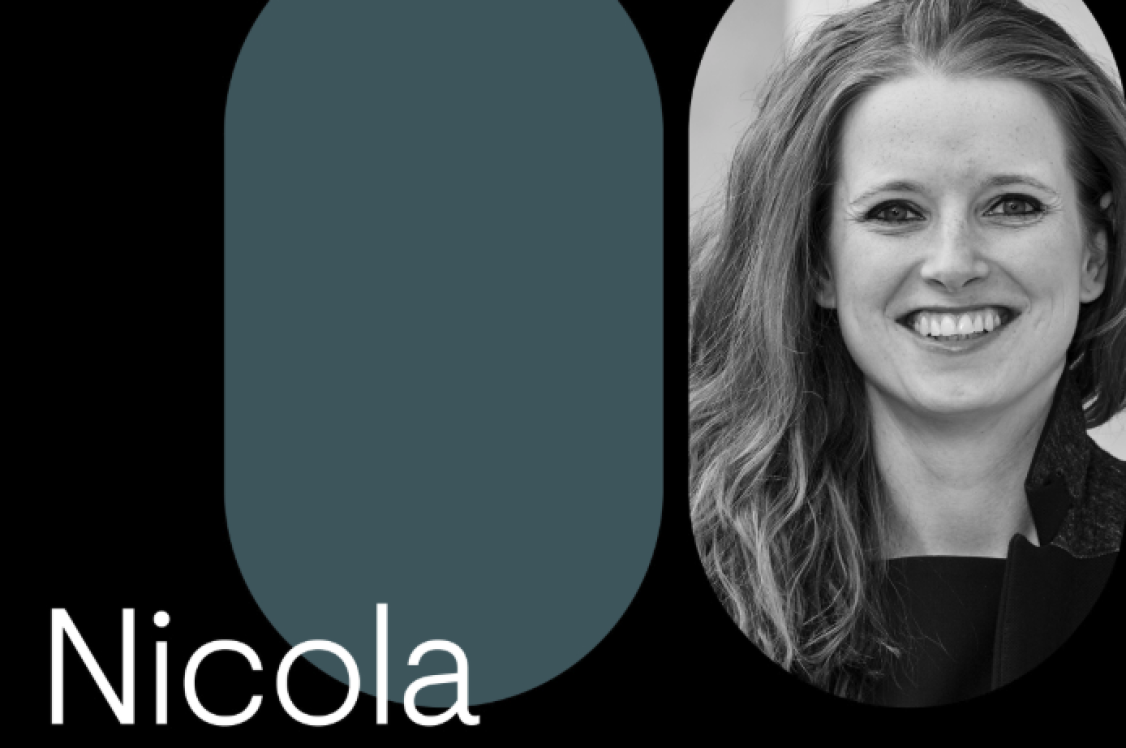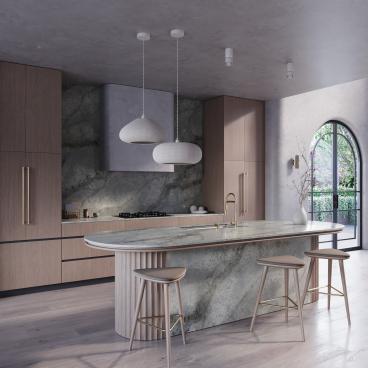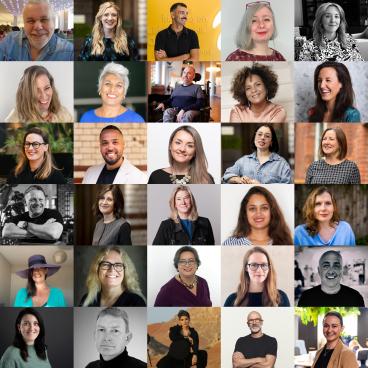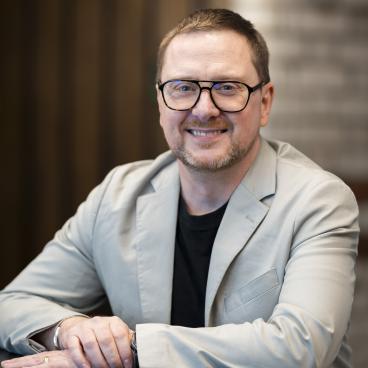Should ESG be GSE? Alex Esfahani, associate director/head of sustainability, Chapman Taylor, elaborates in our 200th interview.

Our 200th interview is with Alex Esfahani of Chapman Taylor.
When we heard the news that Alex, long-time friend of the Studio, had been promoted to associate director & head of sustainability at Chapman Taylor we set up a chat immediately (after congratulating him, of course).
You might say that Alex has sustainability coursing through his veins. His passion is palpable – it’s contagious. But as he told us when we recently met, it hasn’t always been this way. It’s something he’s learnt to embrace over the course of his professional life.
He also firmly believes that sustainability cannot exist without EDI. And with this in mind, he wonders – perhaps we’ve got ESG in the wrong order… should it be GSE?
For this, our 200th interview, we’re excited to share a glimpse into Alex’s insights, drawn from Chapman Taylor’s global roster of studios, the feedback to his often controversial presentations delivered alongside colleague Dr Catalina Ionita, and why he believes we should listen to the younger generations – the future leaders of our industry – for solutions to the socio-economic issues we face.
Alex, it's always a pleasure…
Firstly, congratulations on your new role as Head of Sustainability at Chapman Taylor – can we talk a bit about that?
“Thank you, yes – the new role has been an exciting opportunity, not just in the sense of becoming Head of Sustainability, but also in having the chance to help steer the leadership of the business. It has given me greater freedom and flexibility to strategise the management of sustainability across our global studios.
"I now have oversight of decision making in relation to sustainability within our projects. When speaking with clients, I can introduce sustainable strategies first-hand and from the outset.
"Additionally, the role gives me the opportunity to contribute to thought leadership groups within the industry. I now have a much broader platform to get involved in extracurricular activities that support the profession in a variety of ways.
"For example, with the support of Material Source, we established a sustainability group for the North of England, bringing together like-minded individuals to support initiatives across a wide spectrum of sustainability, whether that’s social value, environmental principles, or holistic governance.
"I'm an architect at heart – that will always remain. I'll always be working on projects, but this new role allows me to embed and integrate sustainability from the outset. Being actively involved in projects on a day-to-day basis is a great way to help bridge that gap.”
Chapman Taylor is a global practice, how do you collaborate cross studio?
“This is an exciting part of my role, and it is a real passion of mine, working with people from different cultures and in different parts of the world. Some of my colleagues have become very close friends over the years, particularly in the studios I have had the opportunity to visit.
"The thing with sustainability is that it is not UK centric. It is a global issue we are all having to face. One of the key things we need to do as a business is understand the different challenges, not just from a socioeconomic perspective but by taking a truly global view of sustainability.
"It is becoming a significant challenge, as some studios are leading the way in certain areas due to government initiatives or legislation. But there is also the cultural dimension, and we have to understand how this affects the vernacular and how it shapes the principles behind the way we design in different regions.
"What is concerning is that the way we design in the UK may increasingly need to reflect how we design for the climate of Madrid.
"And Madrid in the future may well resemble the climate of the Middle East. So the lessons we are learning from each region will become increasingly transferable in a number of ways.”
How many studios do you currently have? And where are they?
“We have three UK studios, and ten others across Europe (Madrid, Prague, Warsaw, Brussels, Dusseldorf), the Middle East (Dubai) and Asia (Shanghai, Beijing, Bangkok). There is continual cross-collaboration between all 13 studios.
"Our work is very much based on teamwork, and we learn a great deal from one another. In Shanghai, for example, they are using innovative software to help track environmental principles, and these applications are shared across studios.”
As well as being a keen advocate for sustainability, you’re also passionate about EDI – how do you approach these two topics simultaneously?
“It’s interesting. EDI is probably just as important, if not more important, than the sustainability strategy. In our industry we talk about 'environmental, social and governance' – ESG. But we always start with the ‘E’ and talk about the principles of how we approach environmental design.
"But actually, we should be doing it the other way round, because if you get the ‘G’ – the governance – in place, that is really about understanding people, transparency in how we operate, stakeholders, and the variety of different elements that come together to create a studio, a culture, an office, a sense of social value. All of this stems from the principles set out through governance.
"So really, we say ESG the wrong way. It should be GSE.
"If you get your governance right, this forms a foundation that naturally supports EDI. And if you can then embed the right EDI structure and social value principles within a studio or office, you can genuinely say that you practise in the most ethical and sustainable way.
EDI is probably just as important, if not more important, than the sustainability strategy.
"When we look at EDI, it’s fundamentally about fairness. We need to create a platform that is equitable for everyone, giving all individuals access to the same opportunities. I often use an analogy – think of the Brian Coxes of this world versus the Albert Einsteins. Both are incredible minds in the same field, but Brian Cox is the extrovert, the speaker, the one who appears on television, the one your grandmother, Doreen, would recognise.
"The Albert Einsteins of this world have more introverted characteristics. That distinction is important. EDI is such a broad topic. People do not have a straightforward set of characteristics, but the more we can put in place to support all individuals, the more we can create better environments. And when the environment is right, people are more likely to produce their best work – to be as creative and as provocative as they want to be, without fear.
"And in that space, some of the greatest things in the world have been created. That freedom is essential. It is a core area of our business. We are lucky to have a strong advocate in Dr Catalina Ionita, who we proudly call our EDI champion.
"For me, being of half-Persian background and British born, I have had the opportunity to live the best of both worlds, in a sense. I am proud to be of both nations. But that is not to say I have not come up against systemic issues in society. It’s something that stays with you – that question of how to make things better. While I’ve been fortunate not to experience this negatively in a work culture, that doesn’t mean it does not still exist. As an industry, we are improving, but there is always more to be done.
"I’m a big believer in mentoring and coaching people – helping them be the best version of themselves, while also ensuring there’s a strong support structure within the business.
"Recently, Cat and I delivered two EDI presentations – one focused on allyship, and the other explored the evolution of EDI, from two million years ago to today.
"A key influence for us was the book Sapiens, which explores how human nature and characteristics shape the way we tell stories. It identifies three core narrative frameworks: fascist, Marxist or communist, and liberal or neoliberal storytelling. Everyone falls into one of those three camps in some way.
"We based an entire EDI session around that. It was pretty controversial, but also really exciting – it was provocative, and it challenged people’s mindsets in a way that felt genuinely valuable.”
You did a presentation on carbon for myself and Emily (our creative) to aid our research for Carbon-12 – what drives you to create provocative content?
“I’ve always been a bit whacky! I have early memories of trying to build a plane – some real Wright Brothers-level stuff. But the point for me has always been about spotting gaps in the market. I do things because they excite me. That’s the selfish perspective – I get enjoyment from it because it challenges and stimulates me. These are thought leadership pieces in areas where we need to grow and evolve, so it’s also an opportunity for me to bring an academic perspective to the conversation. I’m also passionate about these topics because they are areas worth fighting for. We cannot open all fronts at once, but in the areas where we can specialise – like net zero, or EDI – we can contribute meaningfully and offer a unique perspective.
"The problem with Net Zero, for example, is that it is a very technical principle. The challenge lies in expanding the conversation to reach broader audiences. I think that is one of the key hurdles we face as an industry – being able to communicate complex ideas in an accessible way. When a topic is difficult or highly technical, people often shy away from it, because they fear getting it wrong or being ‘cancelled’ for not being seen as an expert.
“On the sustainability side, it’s not something that has always been plain sailing for me – and I’m open about that. Even at university, I didn’t fully grasp the gravitas of its importance. It reflects the times, really – I went into the course thinking, ‘Why is everyone talking about sustainability when they should be talking about architecture?’
"Fast forward about 15 years, and I’m now one of its strongest advocates. I’ll hold my hand up and admit that sustainability, which is now a central part of my life, wasn’t always something I prioritised.
"That’s exactly why it’s important we speak openly about this and create a platform where people feel comfortable discussing sustainability – wherever they are on their journey.”
Are clients receptive to new ways of doing things?
“They definitely are. There is a shift happening in the industry. If we were having this interview two or three years ago, we would probably have had a different answer. But the direction we’re heading in is positive. Is it quick enough? We would always want it to be faster. However, there are various background factors holding up the process – socioeconomic issues, geopolitical tensions, wars, and the fuel cost crisis. All of these elements play a key role. Materials are more expensive, project costs have risen, and legislative changes continue to add pressure.
The direction we’re heading in is positive. Is it quick enough? We would always want it to be faster.
"I became frustrated with the number of conversations around the Building Safety Act and how much it has hindered project development in our industry. It has put us in a position where some institutional investors are reluctant to commit funding to schemes due to concerns about delays or the risk of projects not progressing. If we go too far down that road, there is a significant social value implication, especially considering the housing crisis.
"In terms of sustainability, we are seeing positive developments like the Net Zero Carbon Buildings Standard and the introduction of new certification strategies. These are challenging but important for how we approach design. One encouraging trend is that clients are engaging with these issues much earlier, recognising the need to ensure their assets are not stranded in the future.
"They are now looking at whole building carbon metrics, assessing both existing and future portfolios to understand the trajectory they are on. For example, we are working with Grainger in Cardiff on a build to rent scheme, where they are conducting whole life carbon assessments across their portfolio, including the building currently in development. There is a genuine appetite among developers to improve the resilience and performance of their assets.
"This matters because the shift is happening. We are beginning to see institutional investors and new funding models tied to specific sustainability KPIs. The EU and UK taxonomies are developing. Is it ambitious enough? Probably not. But it is still encouraging to see the momentum building.”
Can you tell us about some of the interesting projects you’re involved with or keeping an eye on at the moment?
"I’m currently working on a number of exciting schemes, including the retrofit and refurbishment of an existing Build-to-Rent (BtR) Version 1 project. We’re also involved in several residential developments across London, and Manchester, including the design of a 28-storey tower in Cardiff.
"Additionally, we support developers in appraising viability and defining the cap and collar of sites. That’s the exciting part of my role, I get to work across a range of scales and stages, from viability and design through to delivery, with sustainability playing an intrinsic role throughout.
“We work across different sectors, countries and scales. Our Shanghai team is working on schemes that are 170 square kilometres in size. So, in essence, they are building cities – it is placemaking on a completely different scale.
"The technology they are using, particularly AI and software processes like Grasshopper plugins, plays a key role in assessing 15 minute city concepts and the environmental principles embedded within those designs.
"Then, when we move down the scale, we work on a wide variety of projects, from residential and mixed use to workplace, retail, hospitality, and the transportation sector. This includes mixed use town centre regeneration, adaptive reuse schemes, and developments targeting leading sustainability accreditations such as NABERS, WELL and BREEAM.
"The key thing for us is that, because we have experience of operating at such large scales, we are able to carry that thinking through to the building level and even down to the tectonic level, while maintaining a consistent design language and understanding.
"That is probably one of the most exciting aspects of my role, being able to see all the incredible work happening across our different studios and understanding how it all connects. It is a constant education for me, I am always learning.”
What’s next?
“I enjoy tutoring at Manchester and Sheffield Universities. It is important to ensure we maintain strong contact and connection with the grassroots. This works in two ways: first, that we are teaching them; and second, that we are learning from them, because they are also exploring innovative processes.
The future of sustainability lies as much with the next generation as it does with our own.
"What we have been doing, and what we are trying to enable, is a shift away from the typical top down approach we often see in the industry. Even when we talk about net zero, we refer to both top down and bottom up approaches. For us, this applies equally to the structure of our business. We are focused on making sure that if we get our house in order now, then in the years to come we will not be relying on just one person to lead on sustainability – it will be embedded across everyone’s role.
"And I think, gradually, sustainability will no longer be seen as an optional add on or a topic for debate, but rather something that becomes a fundamental part of how we design, an intrinsic design philosophy.
"At Chapman Taylor, we have created a group called The Collective. It began with an idea from one of our Part 1 team members who was passionate about sustainability and wanted to set up an initiative to talk about it in practice.
"This group grew from just two people to 14 within one studio, and it has since expanded into a global network across several of our studios.
"We intentionally made sure that no senior management were involved, for one key reason: we wanted it to be a society driven approach, something owned and driven by the team themselves. After all, it is their future to shape. We have already seen some phenomenal outcomes.
"The group is not restricted to one topic or agenda – each member finds their own area of passion and develops it. It has taken on a very academic structure, where individuals select a topic to explore, almost like a thesis, and develop it in depth.
"These individuals are without doubt the future leaders of our industry. They will be the ones leading the company in the years ahead.”
What a great opportunity for people coming into practice and beyond?
“I've never taken the opportunity to learn for granted, and I believe it is only fair that everyone else has access to the same platform, because that way, everyone grows. I'm a great believer that if you surround yourself with intelligent and talented individuals, then the whole group will naturally grow together as a result.
"I think that is one of the great strengths of The Collective. What it will become in the future? I do not know, but that is for them to decide.”


